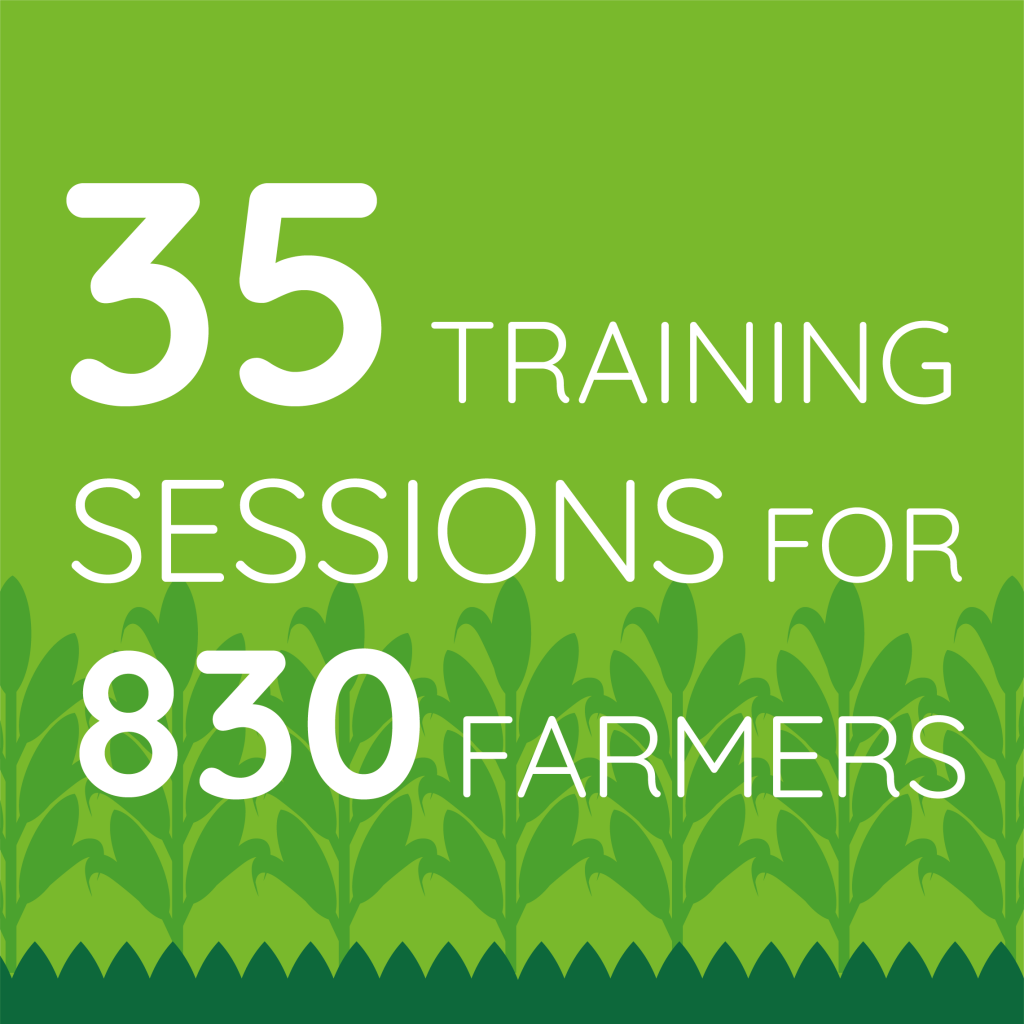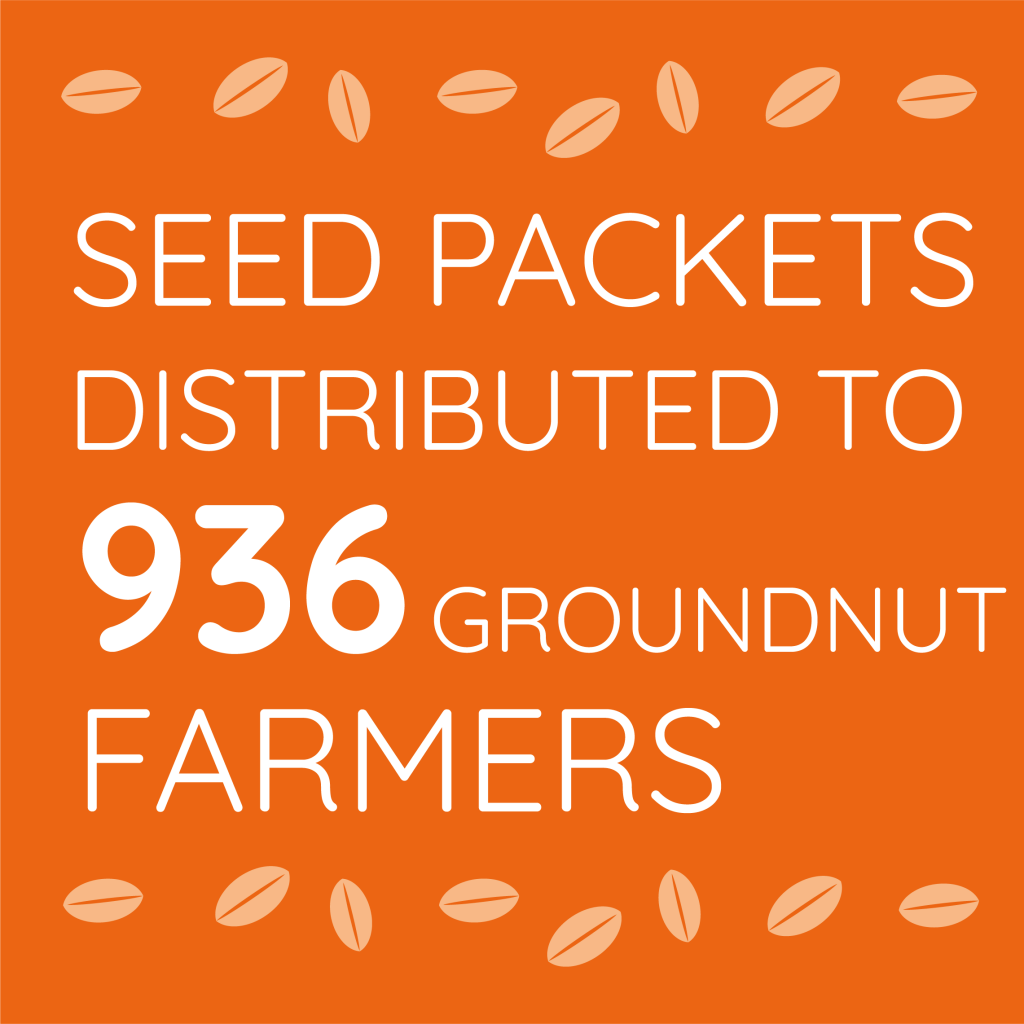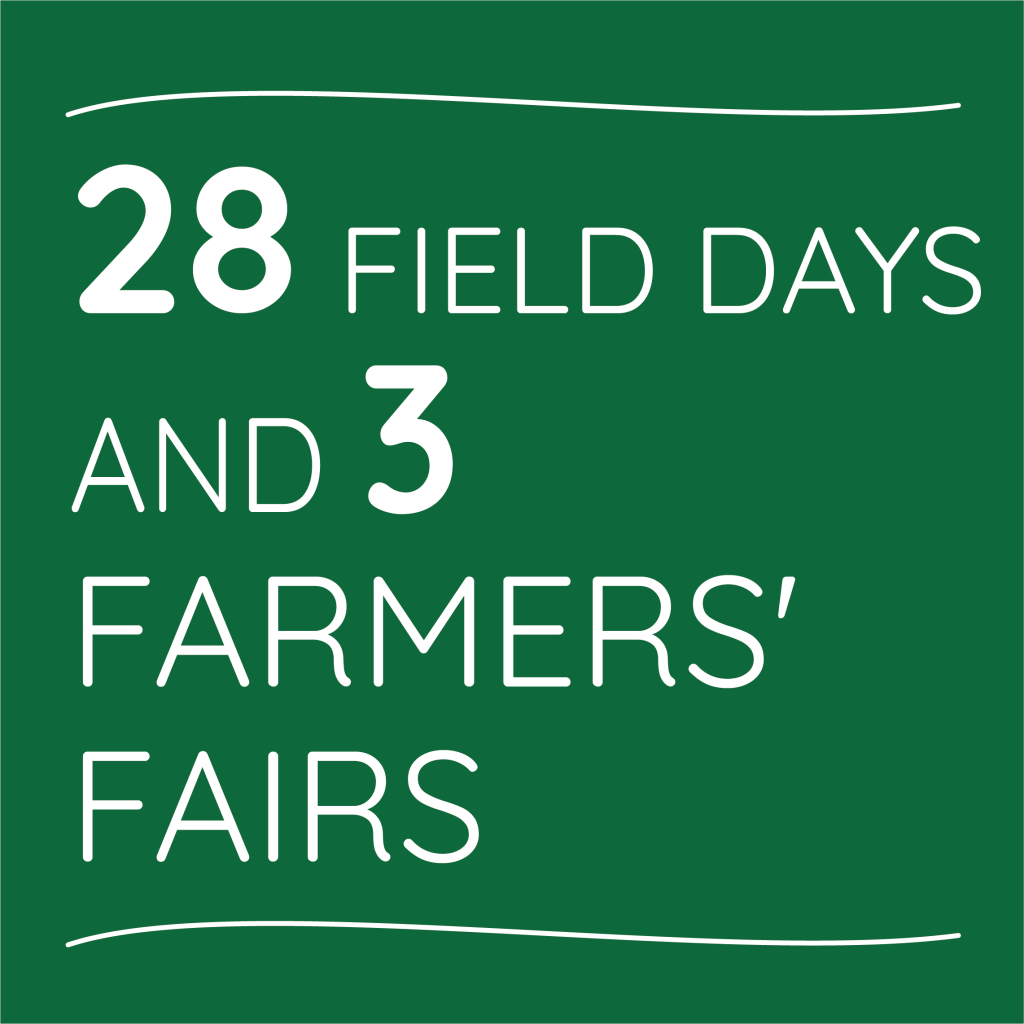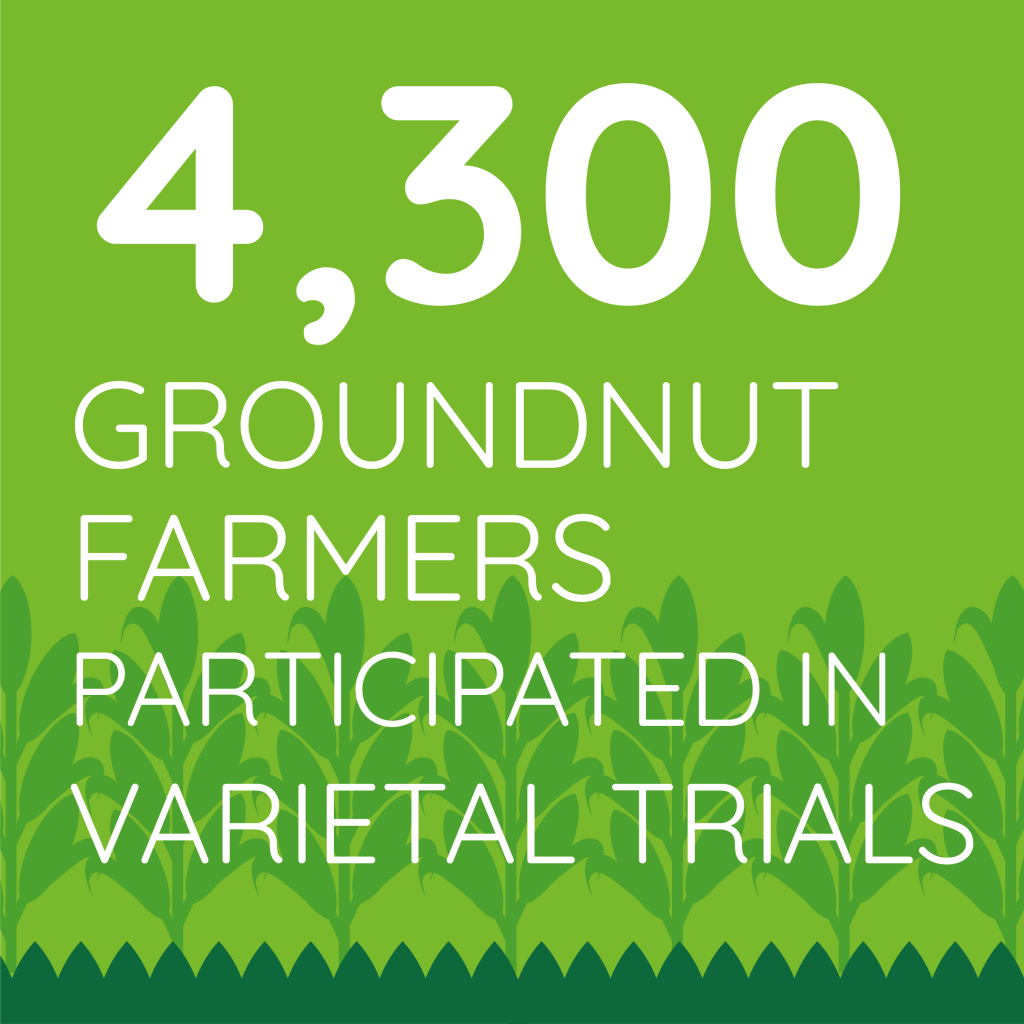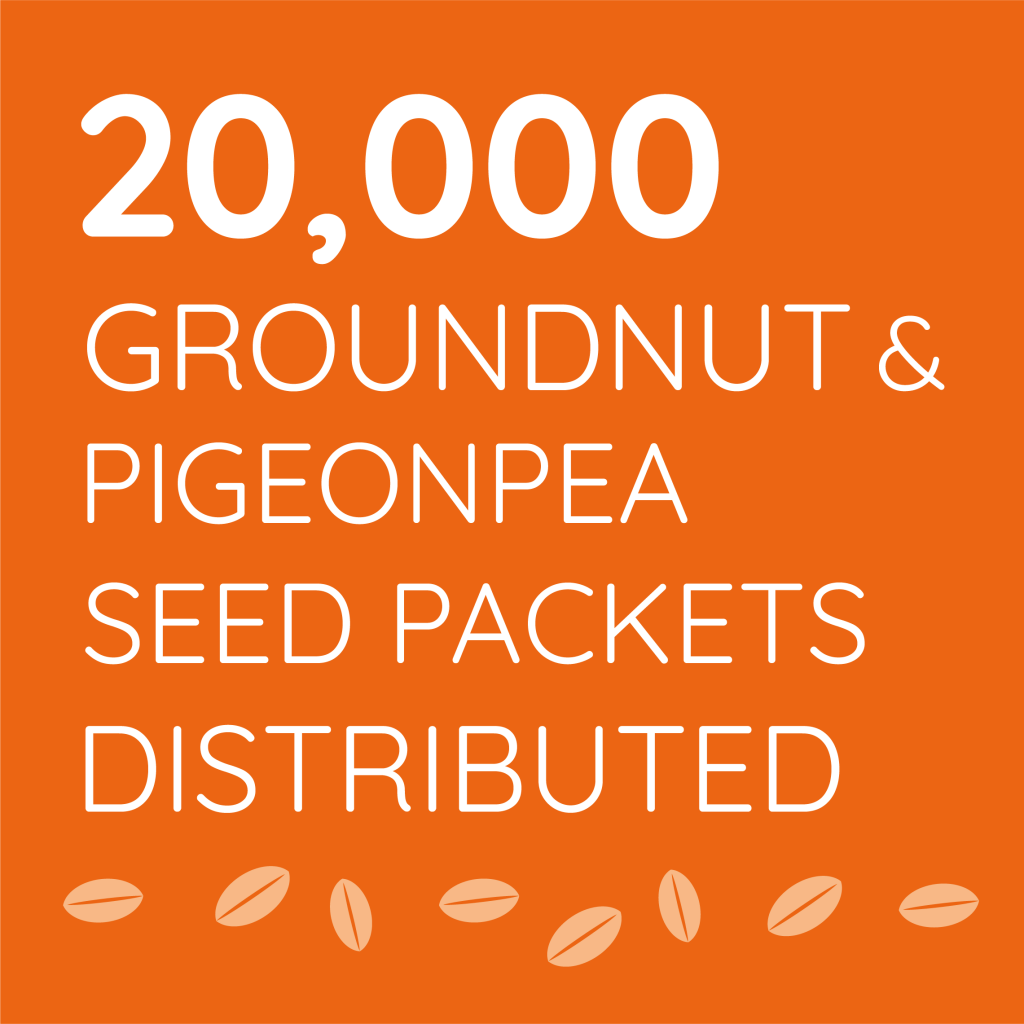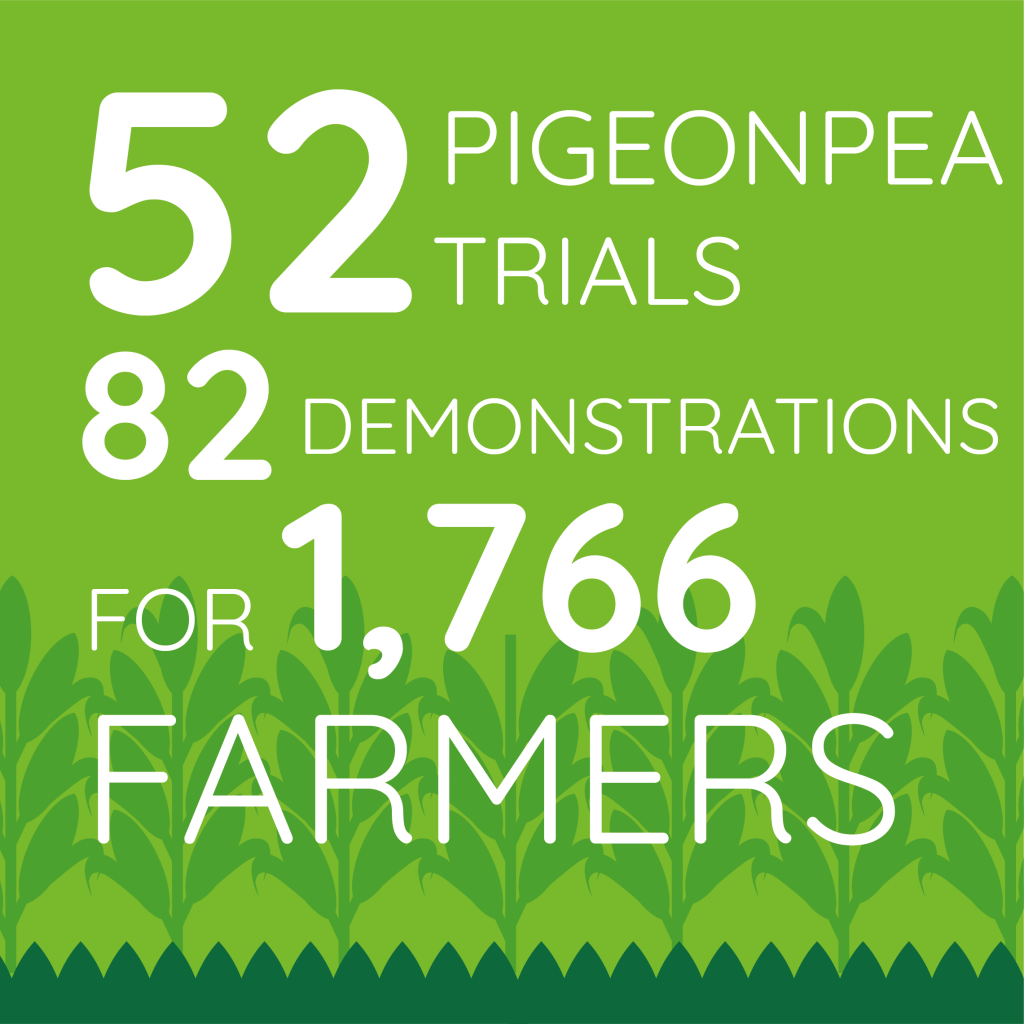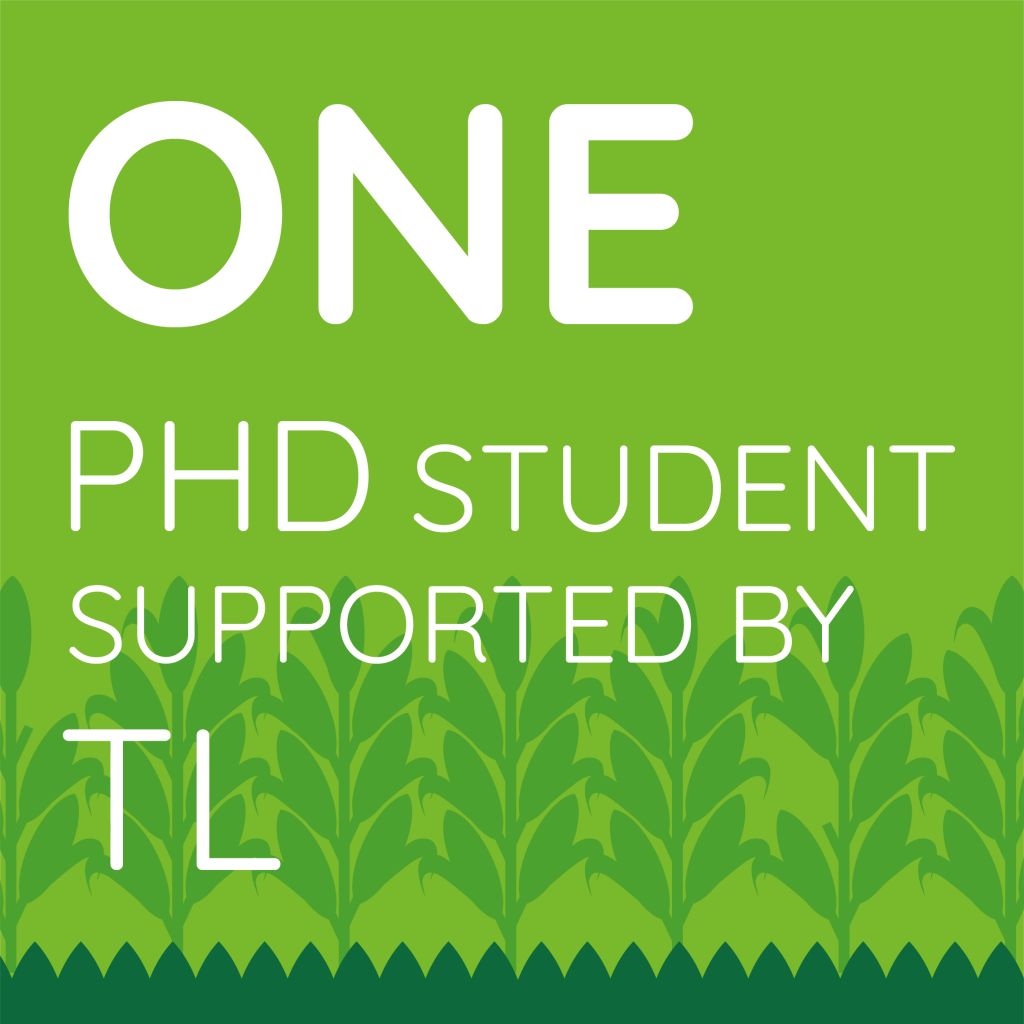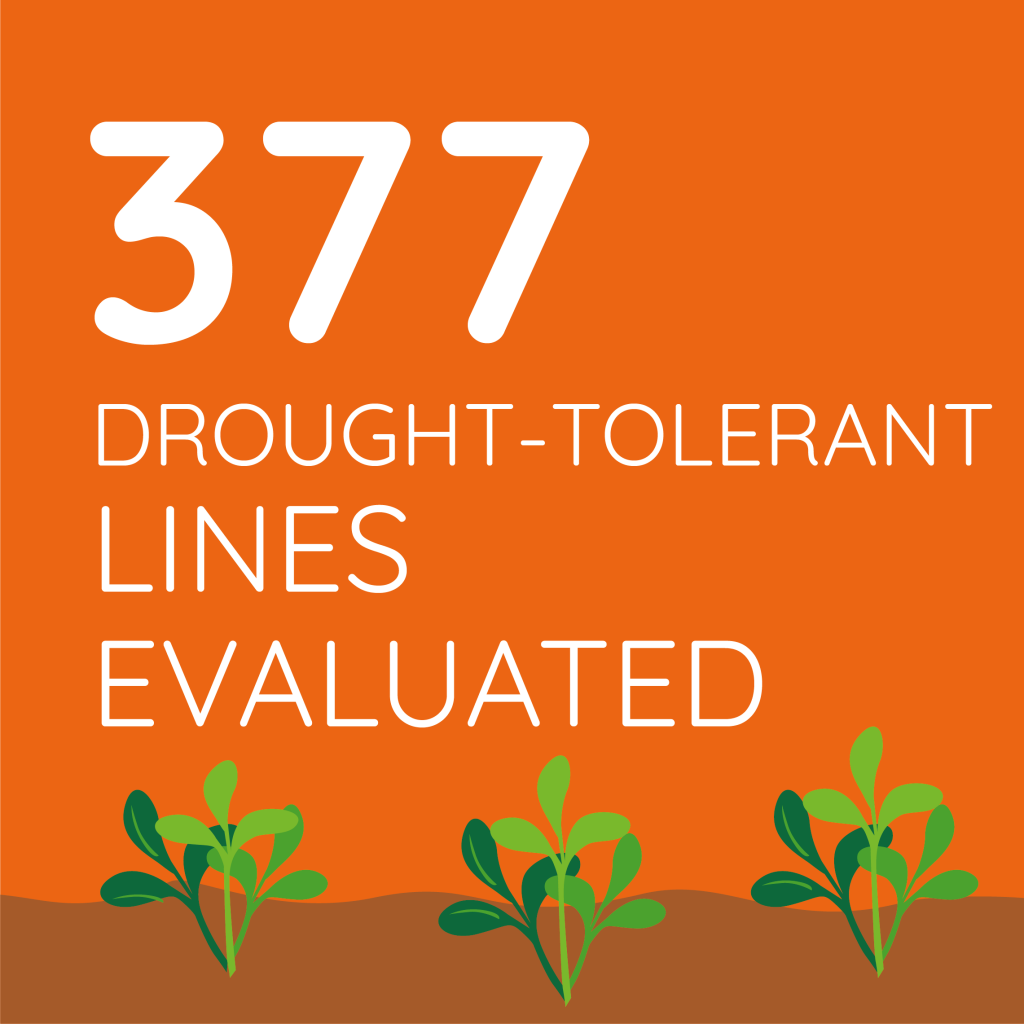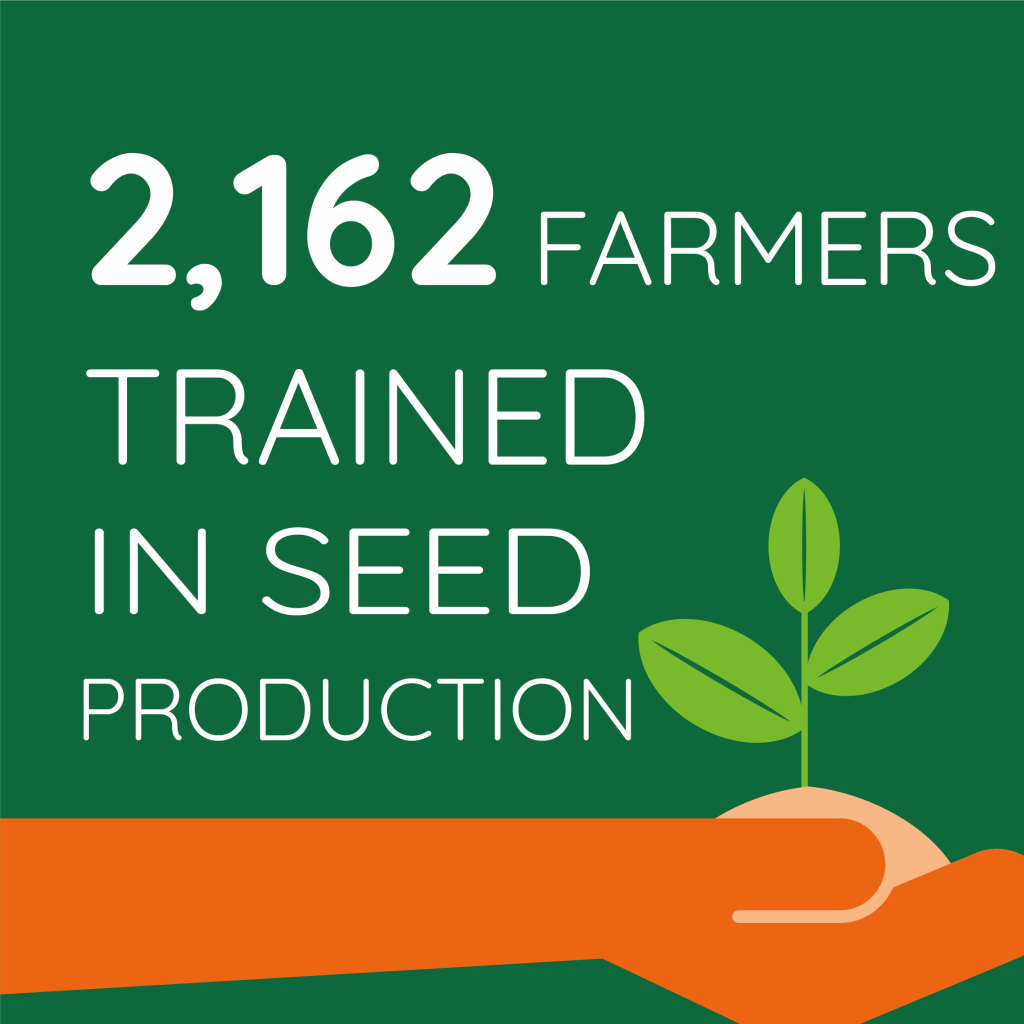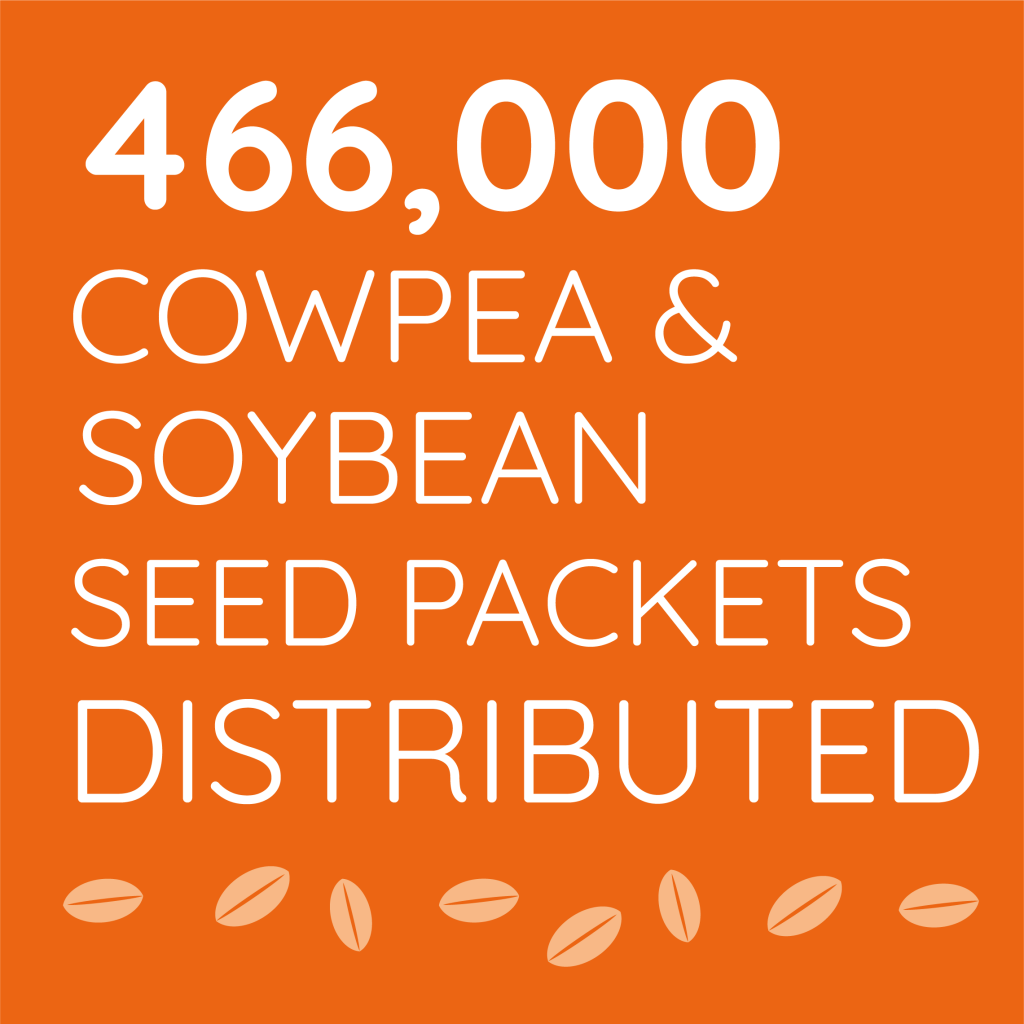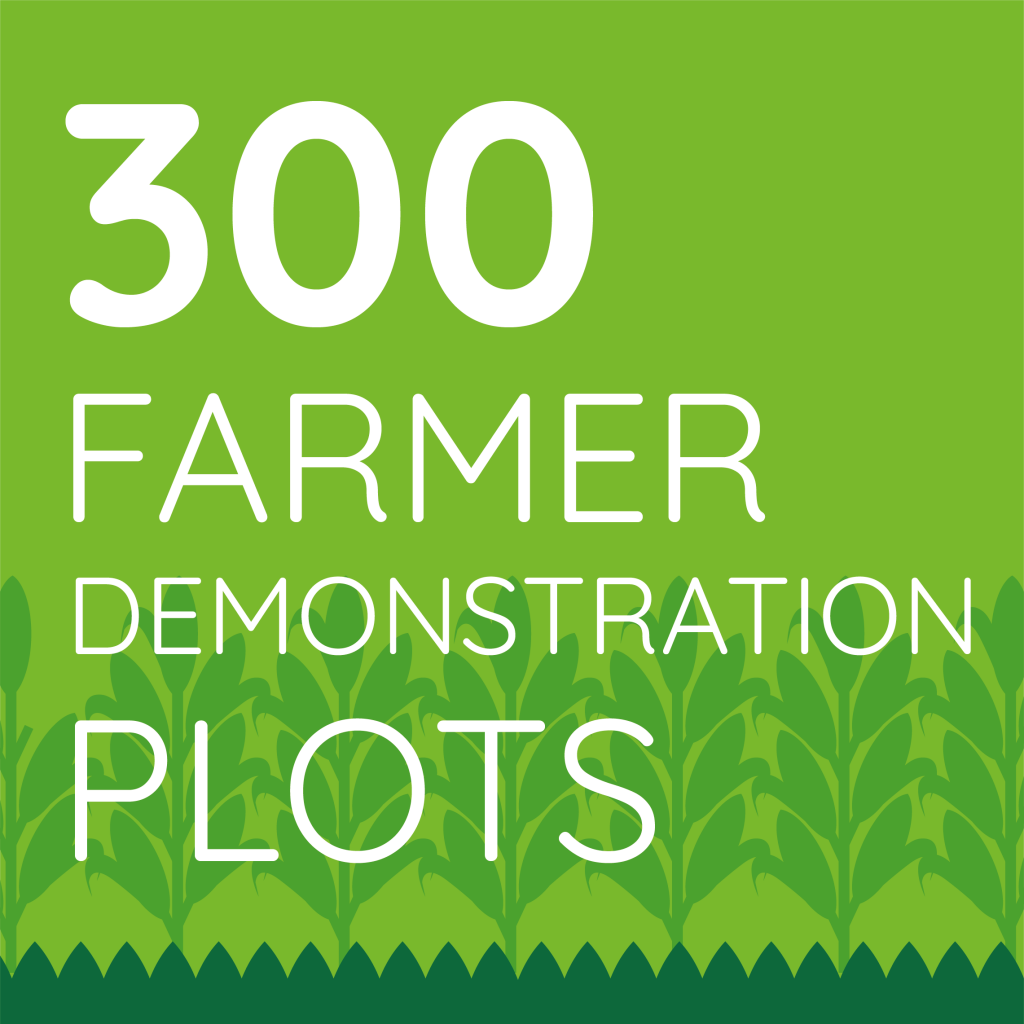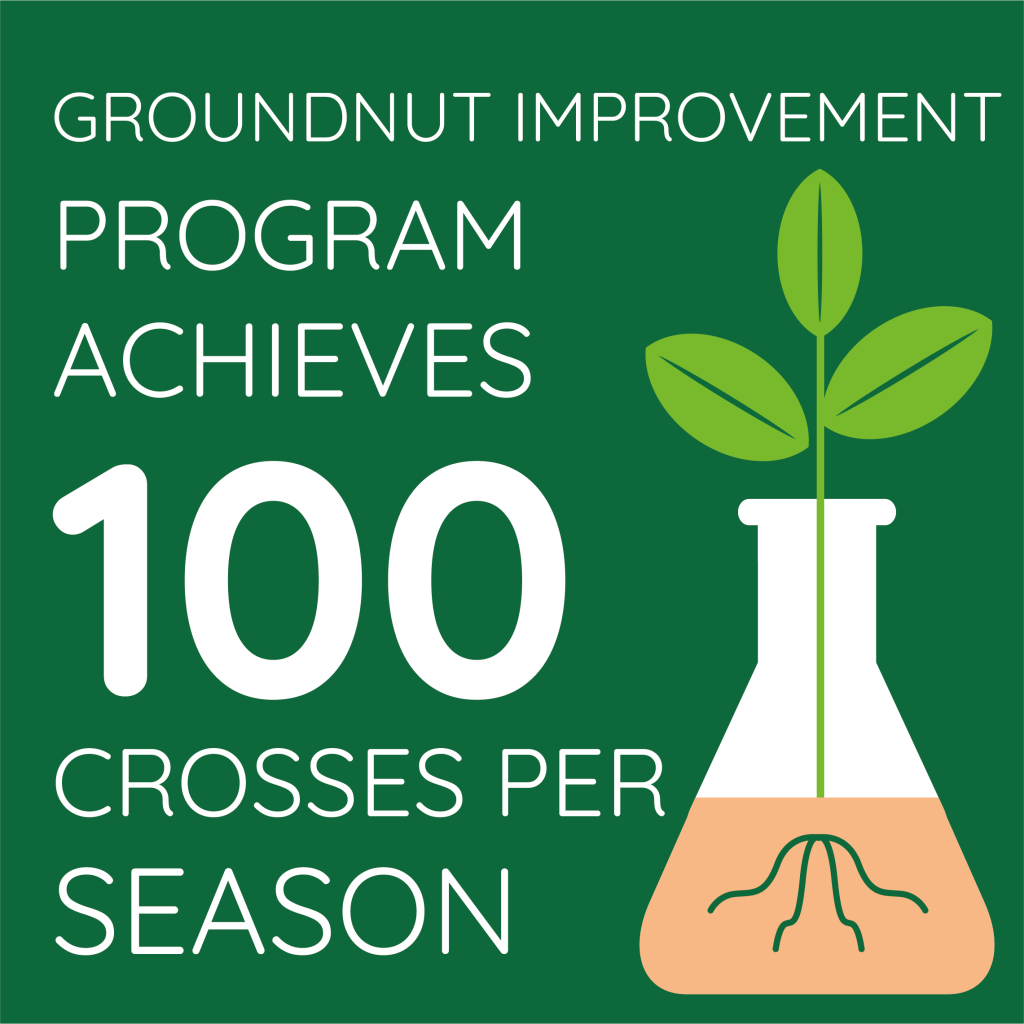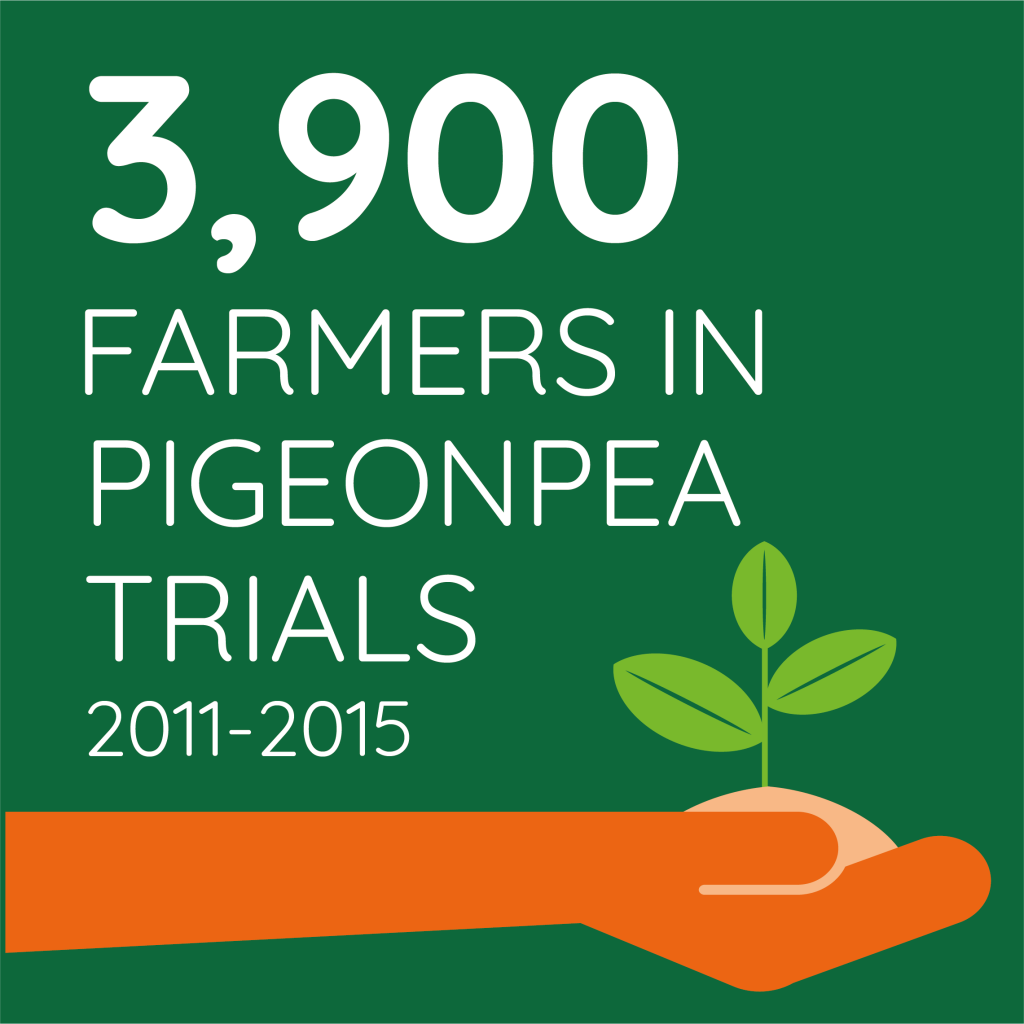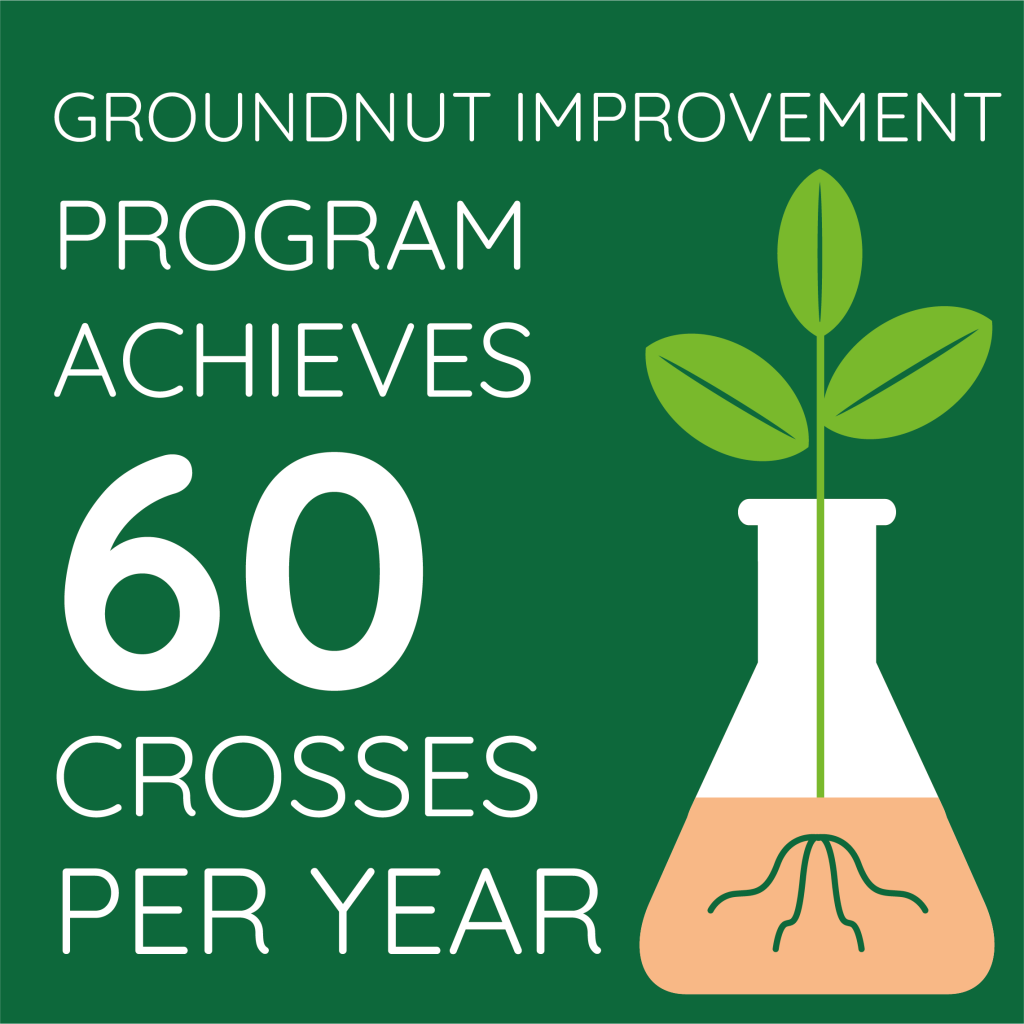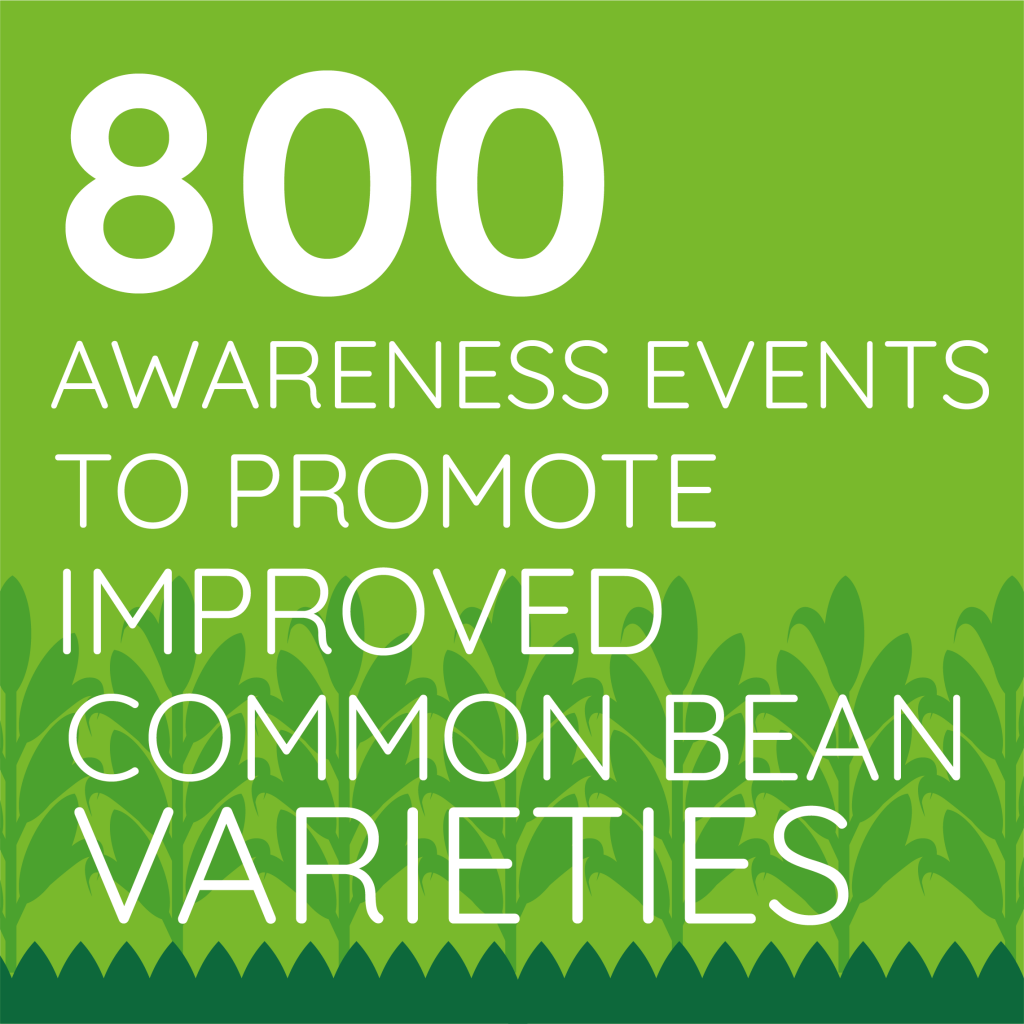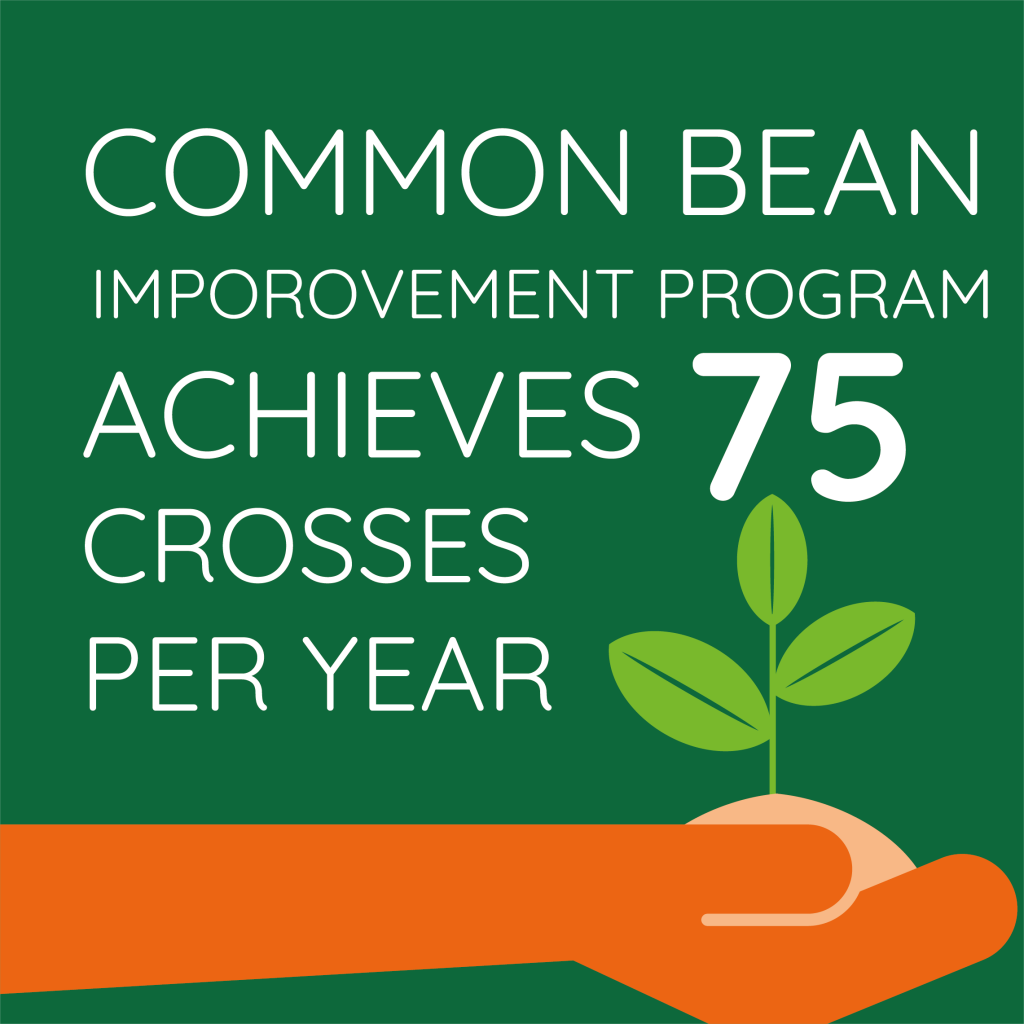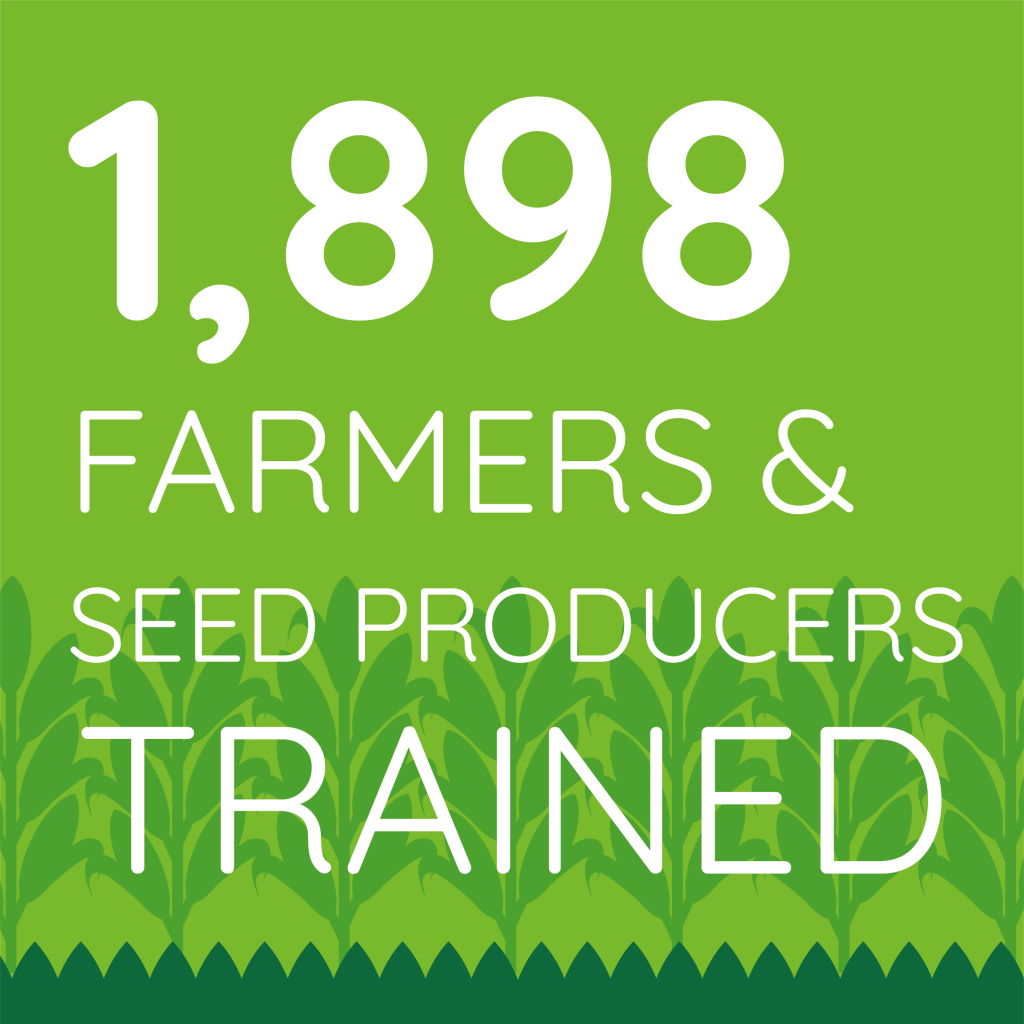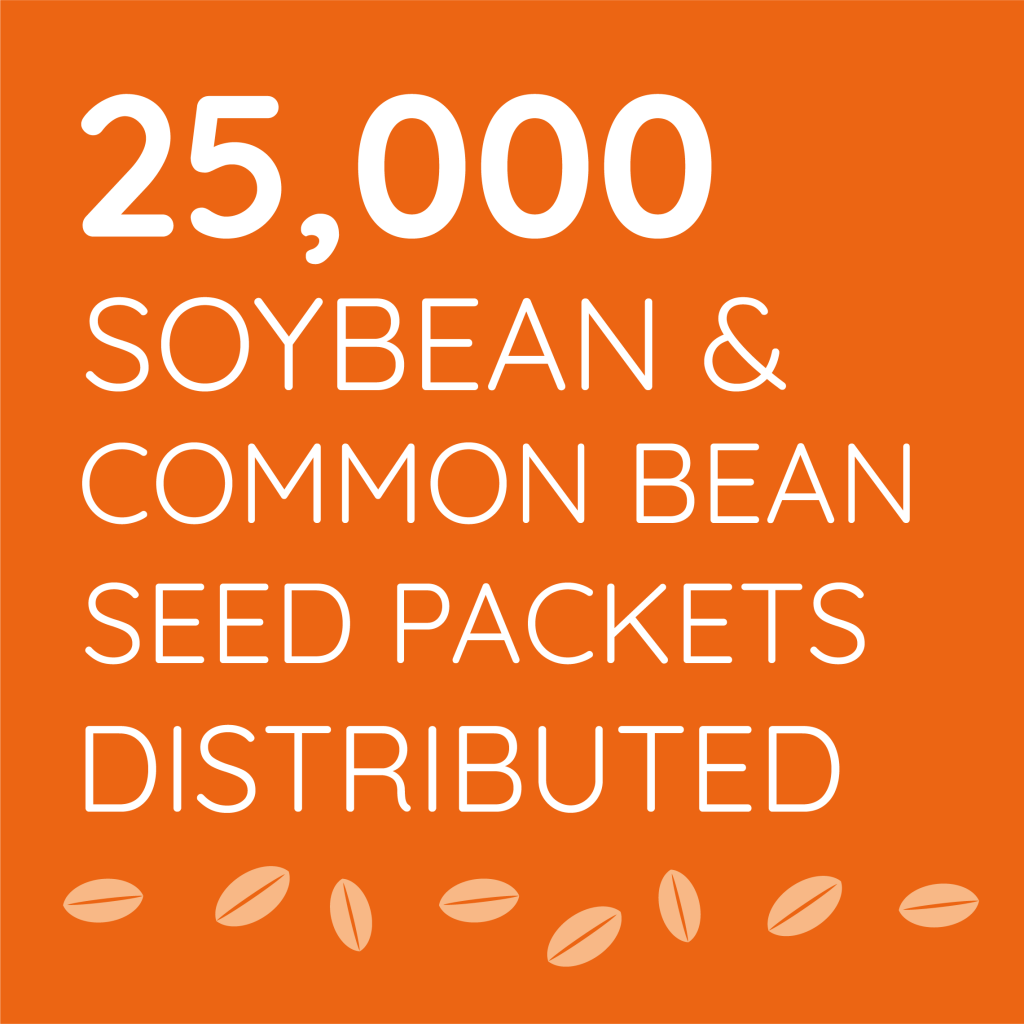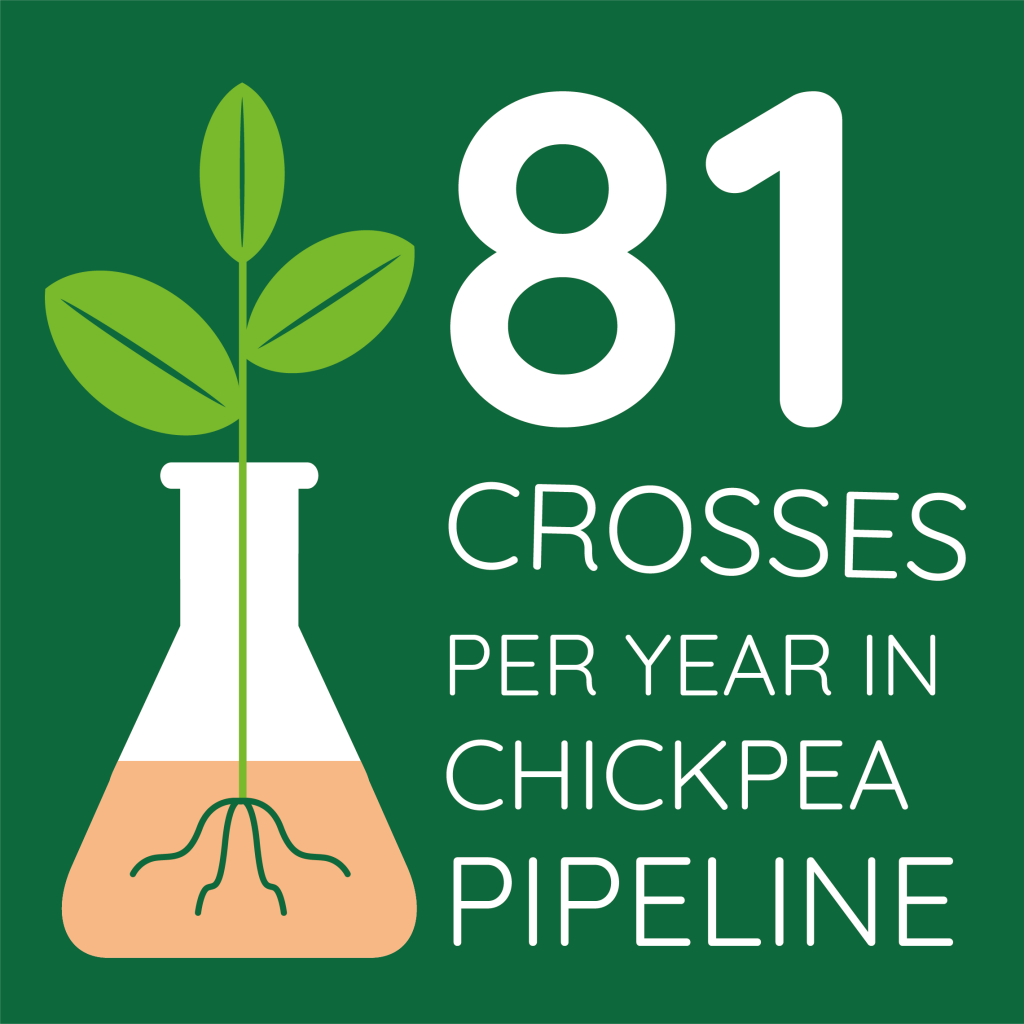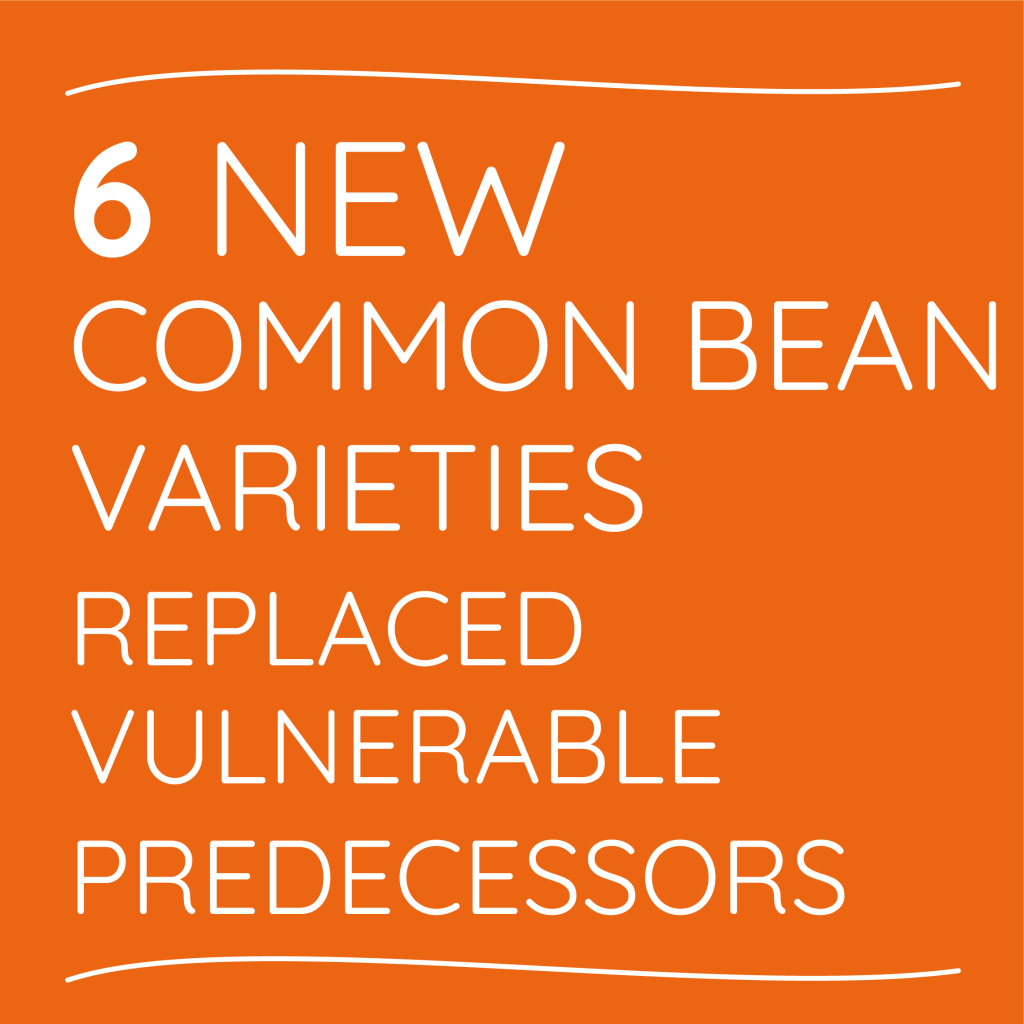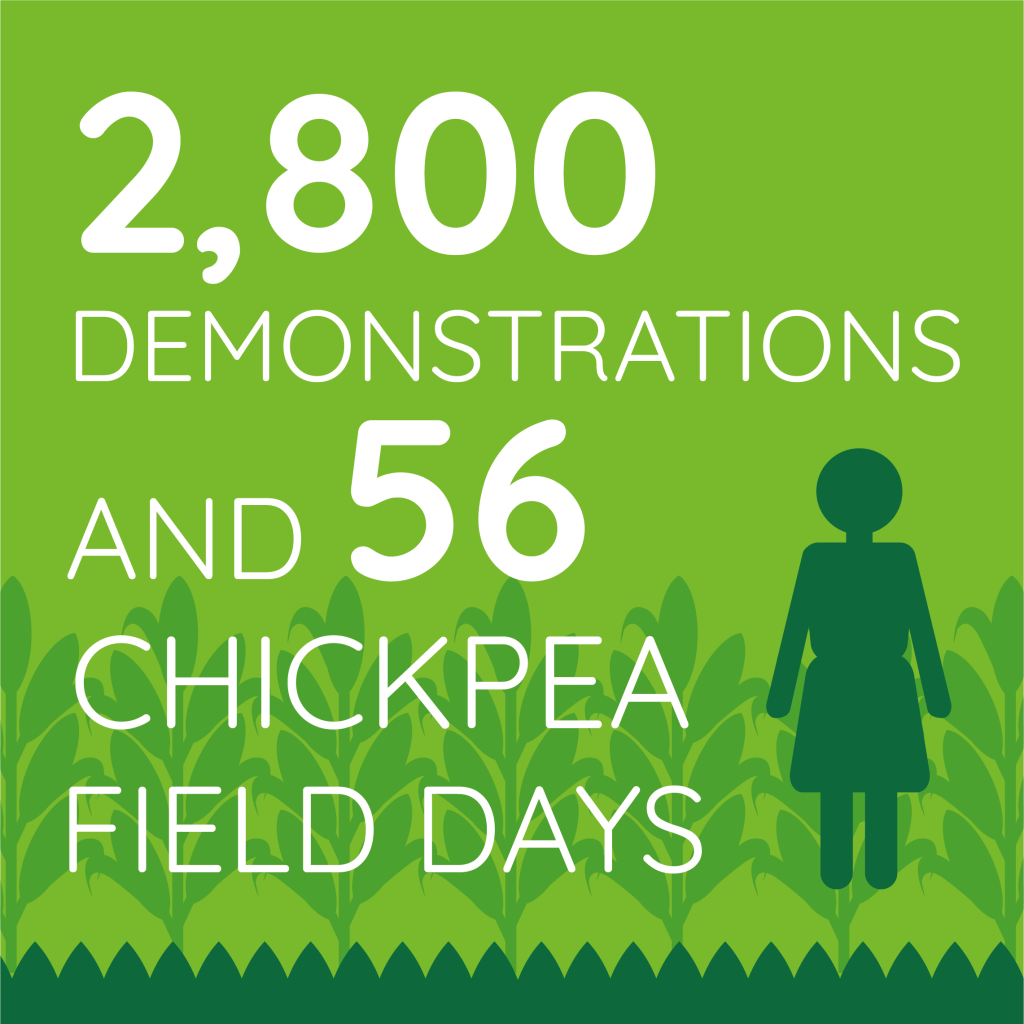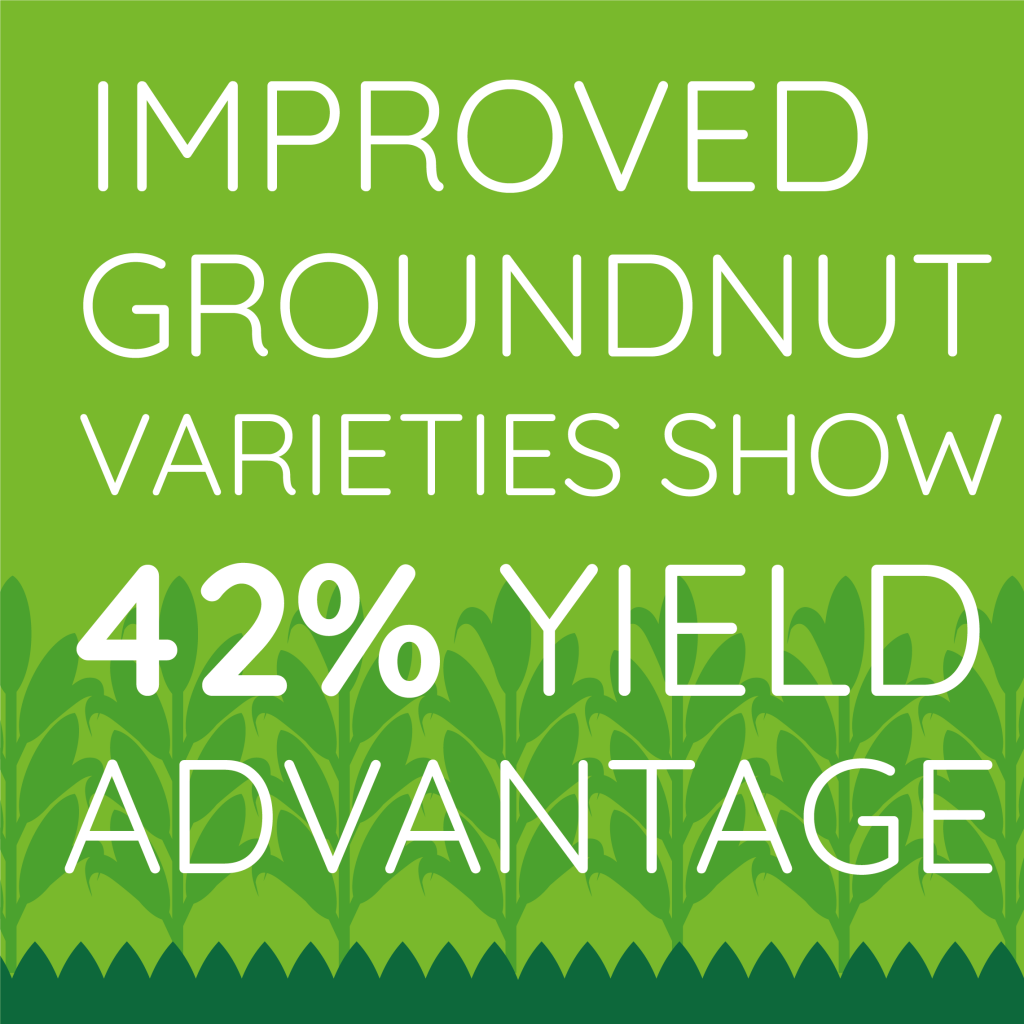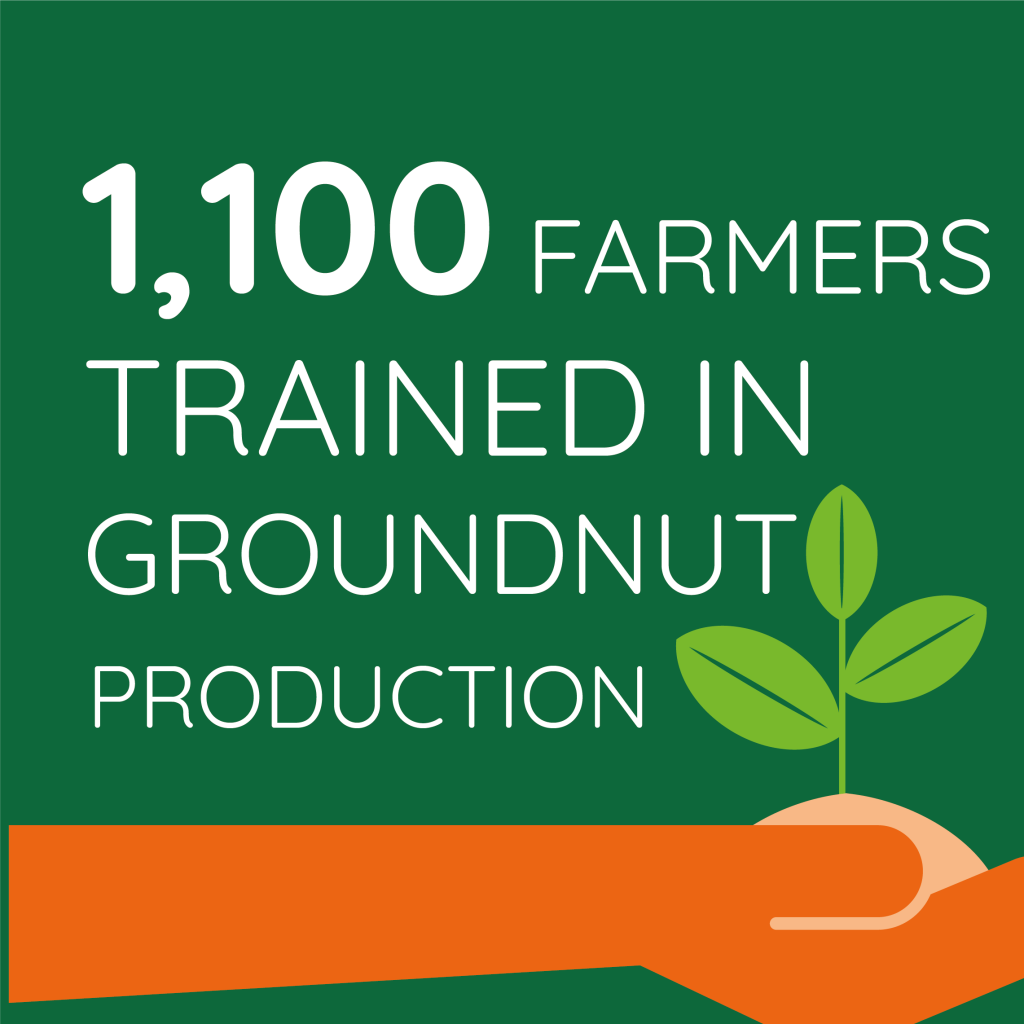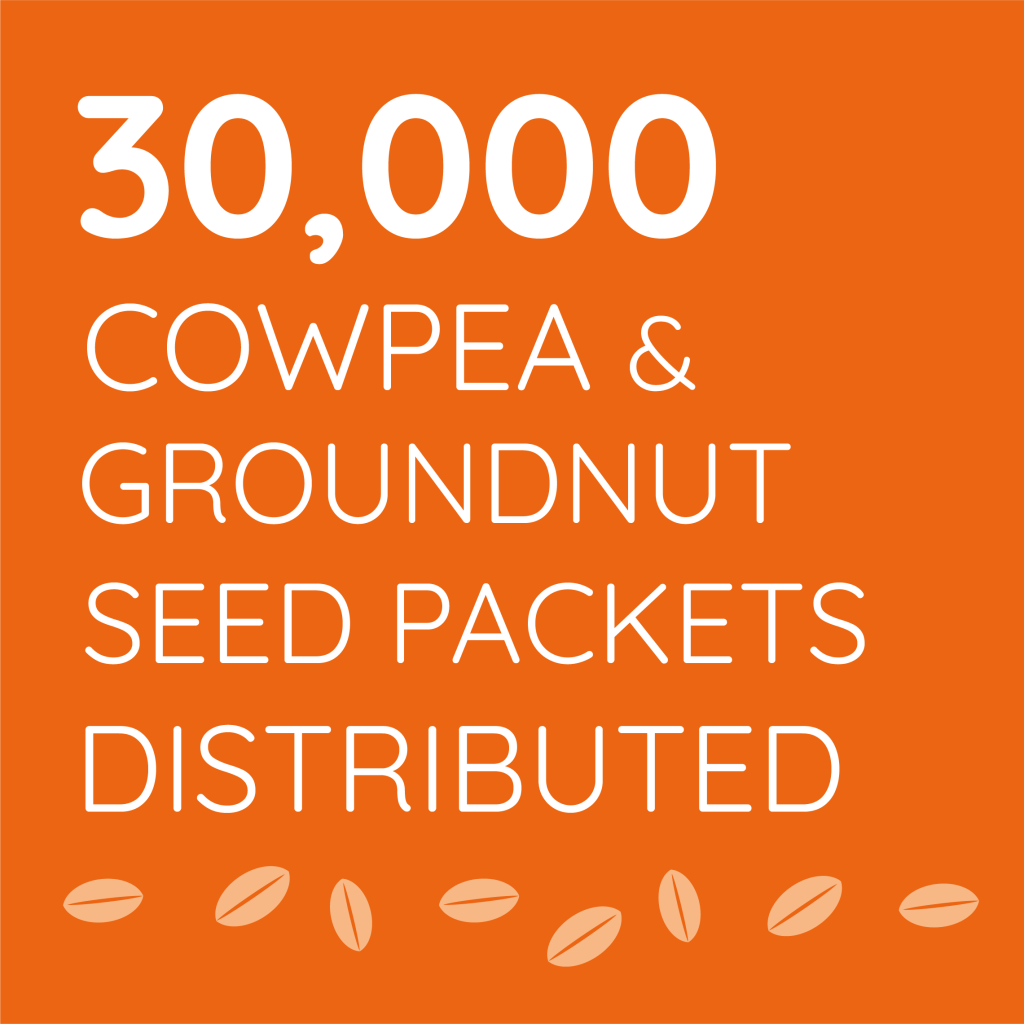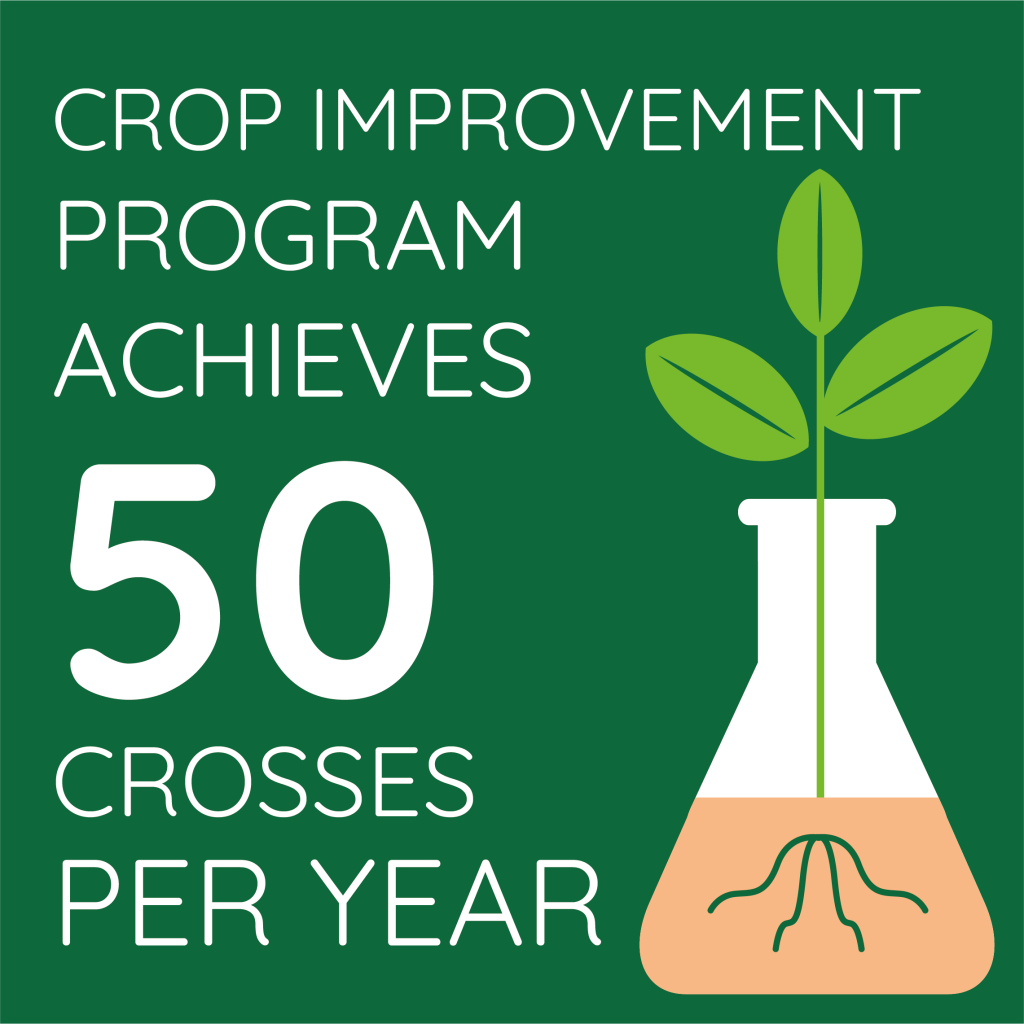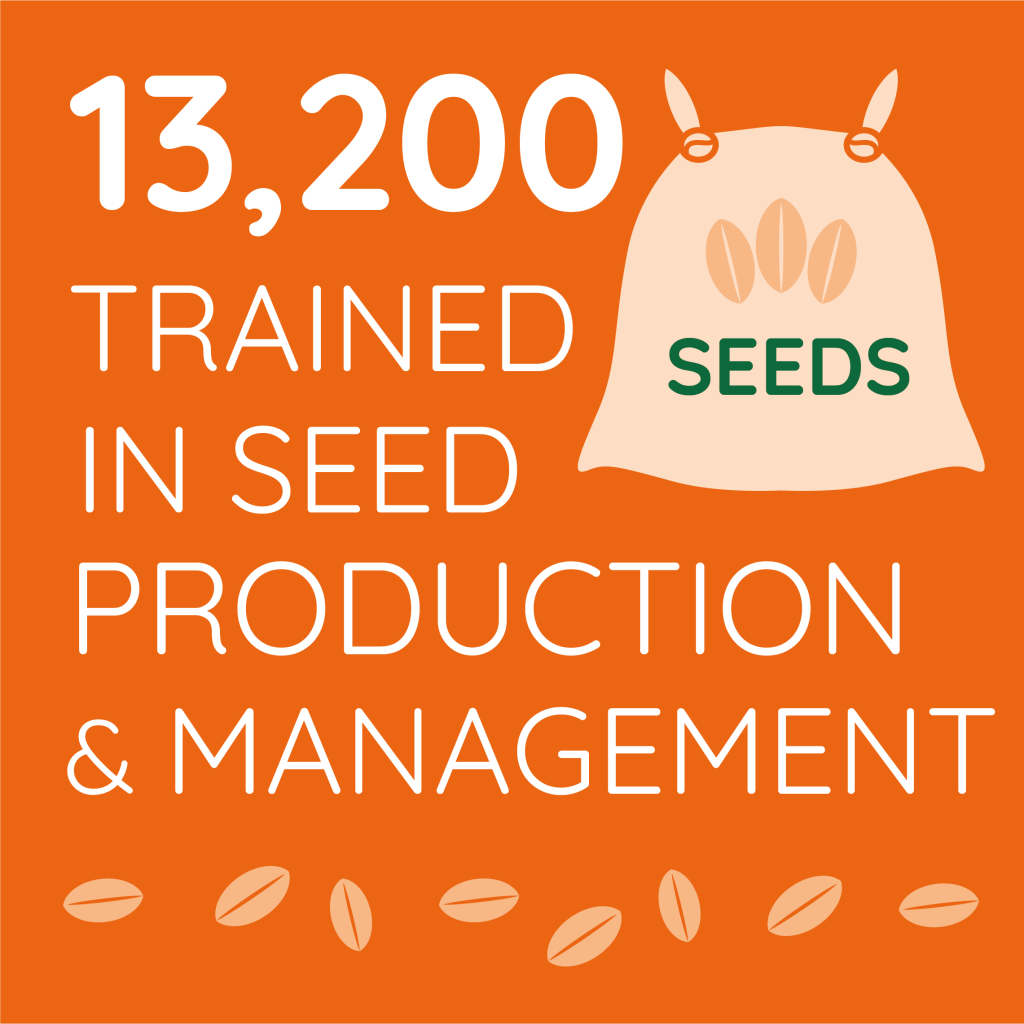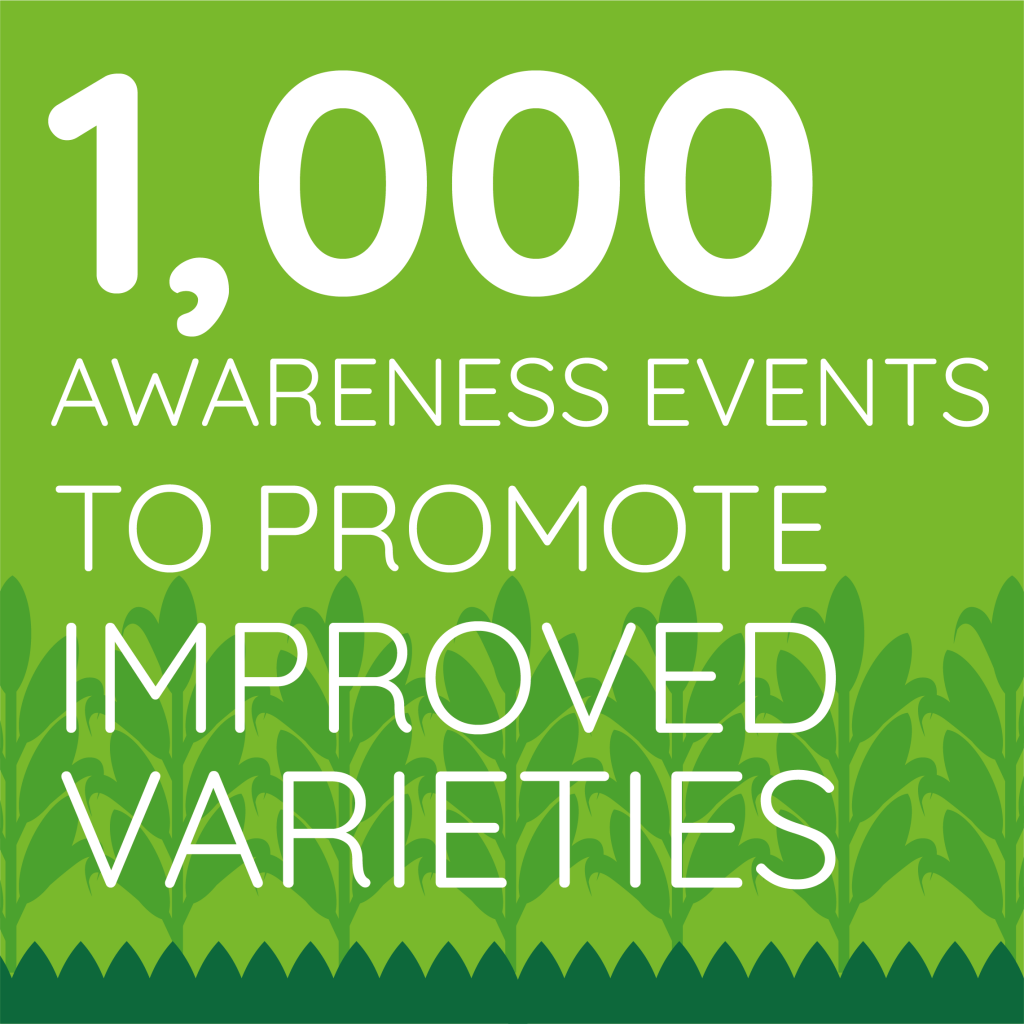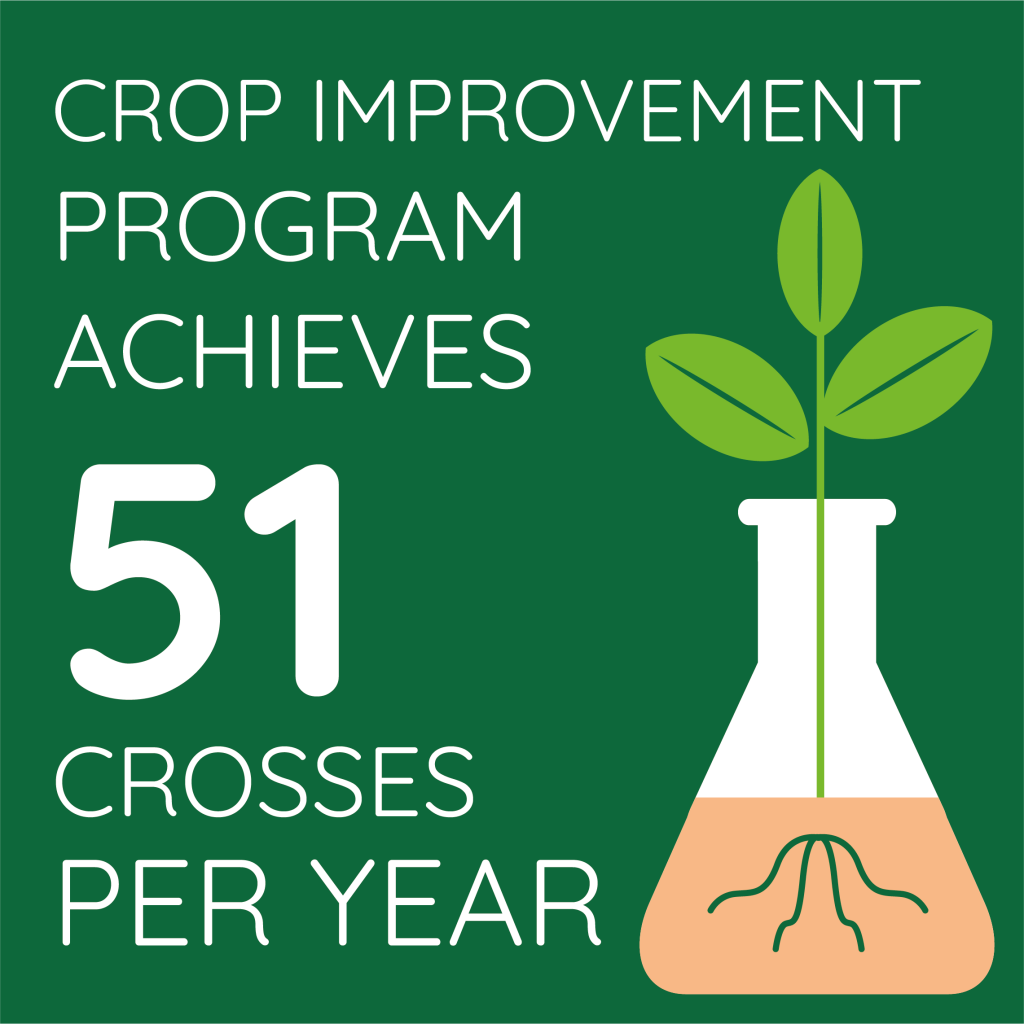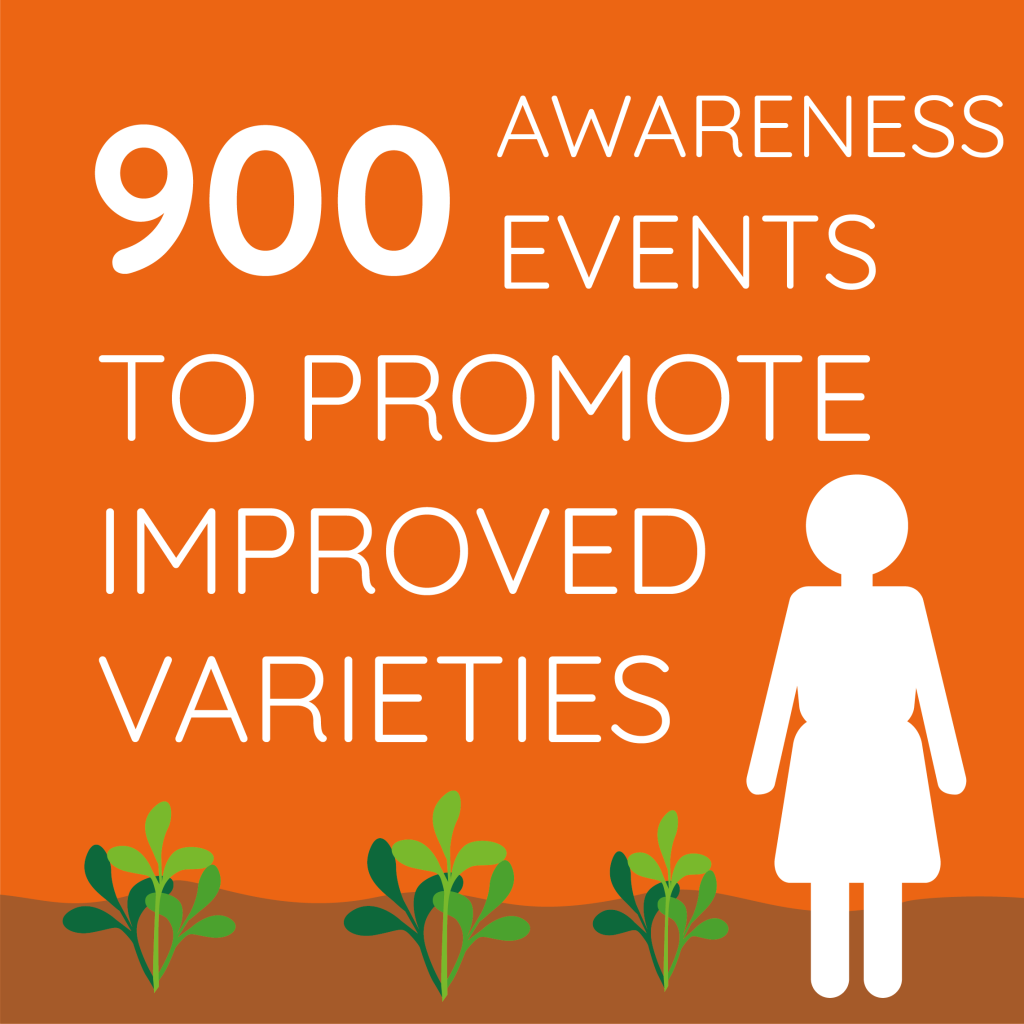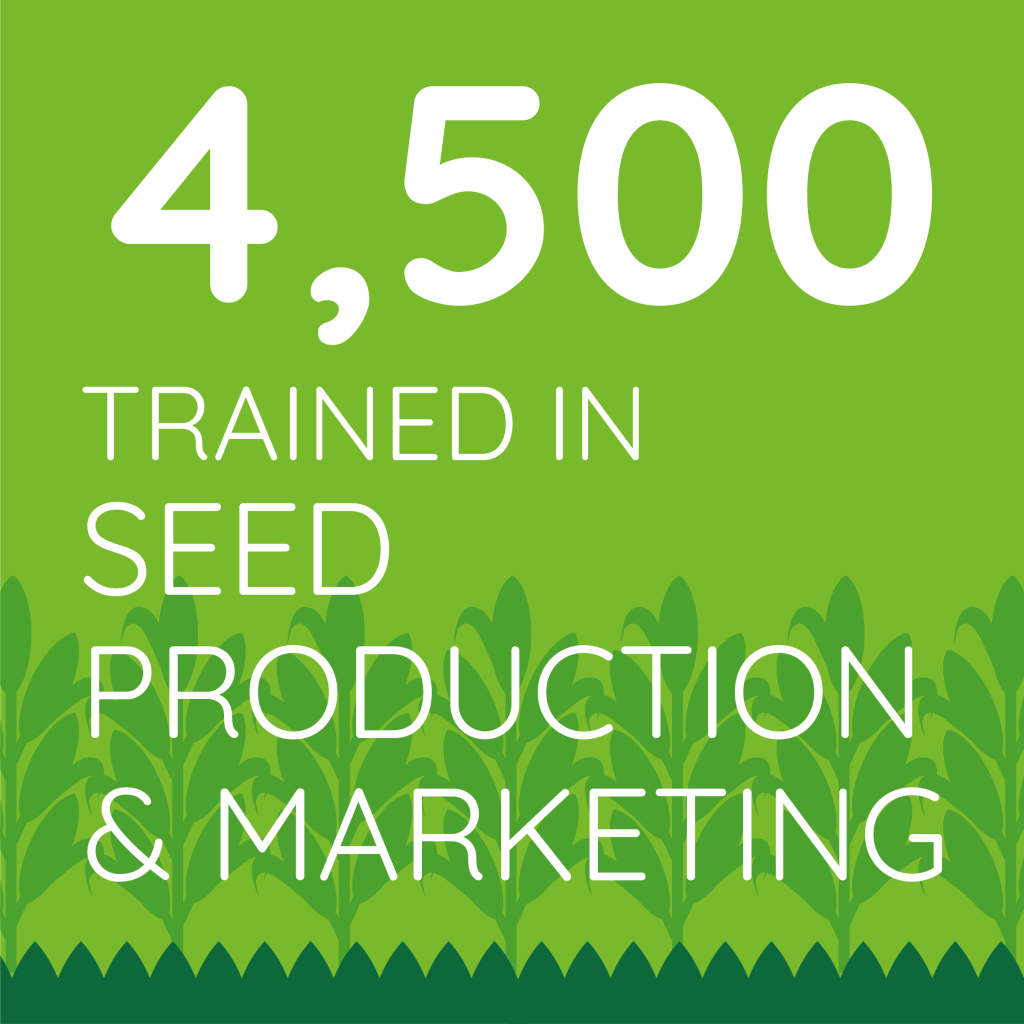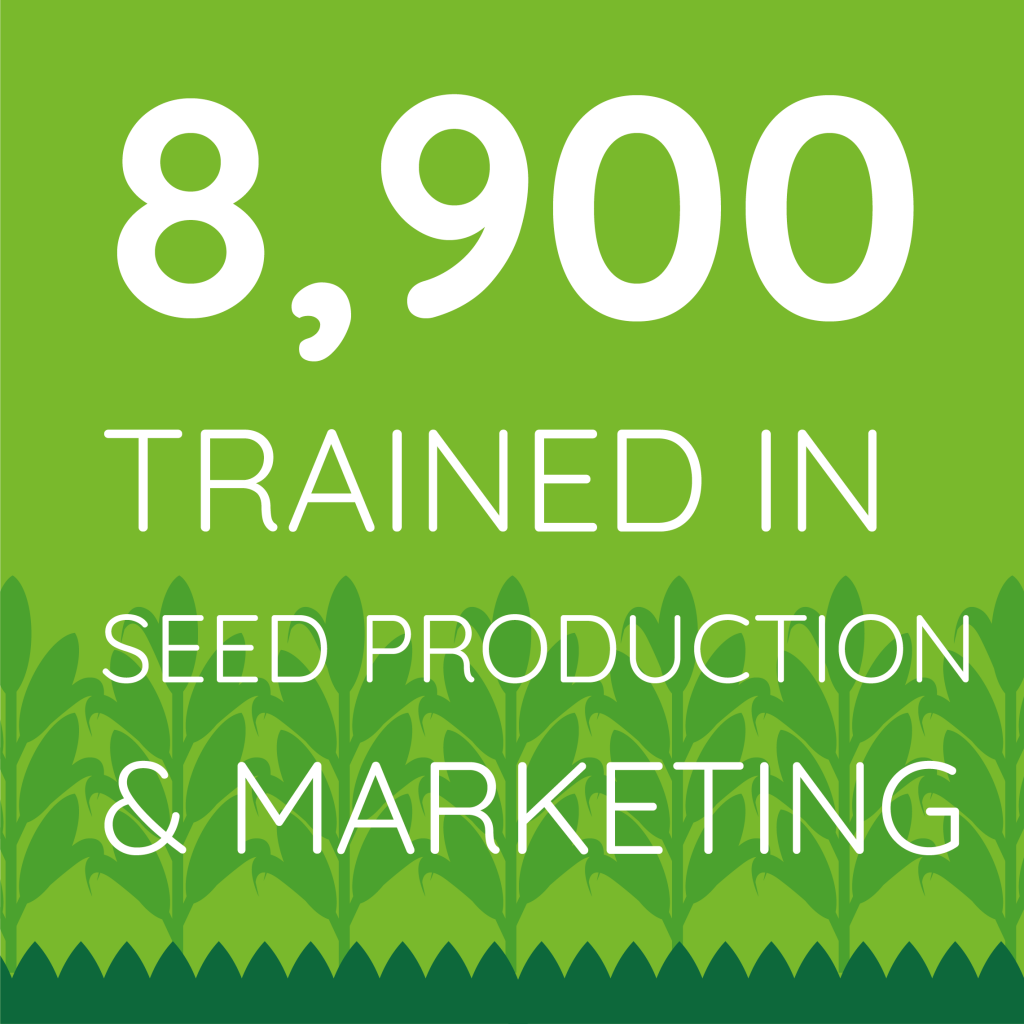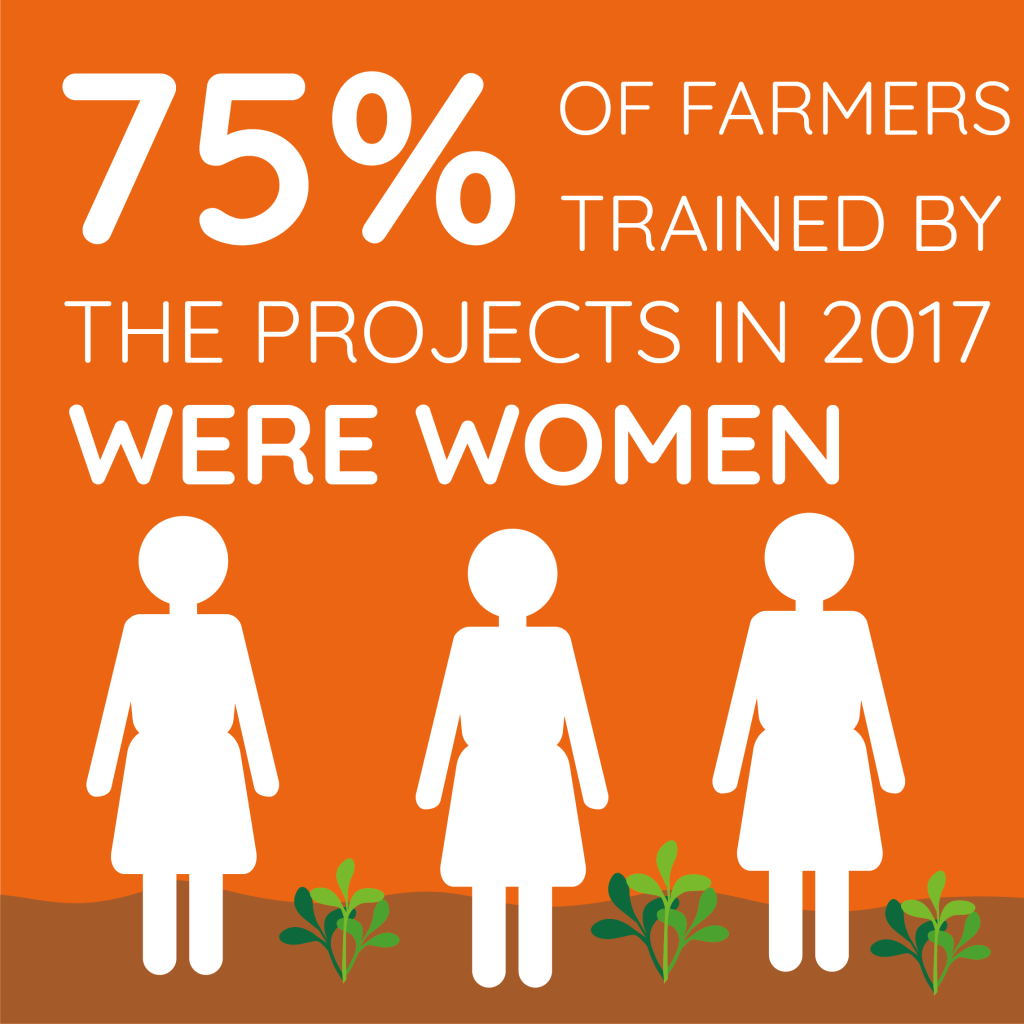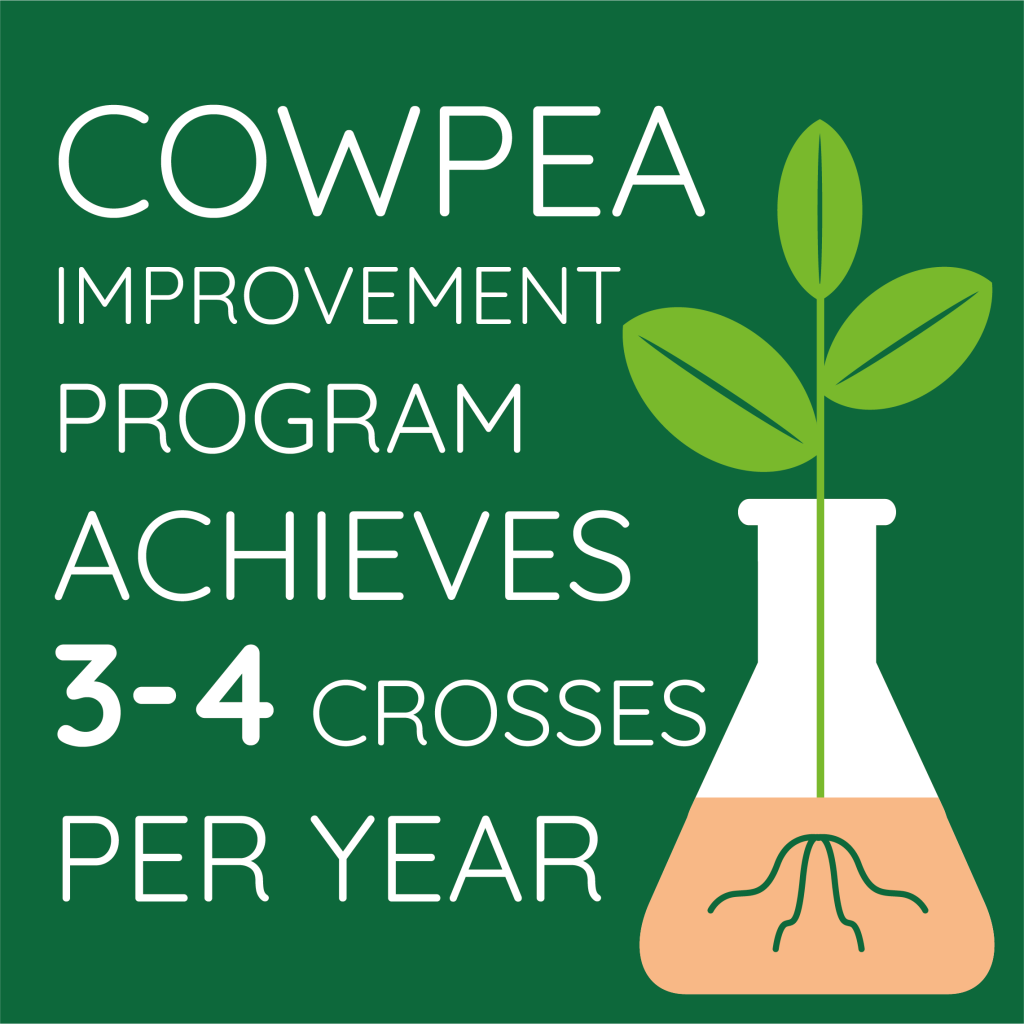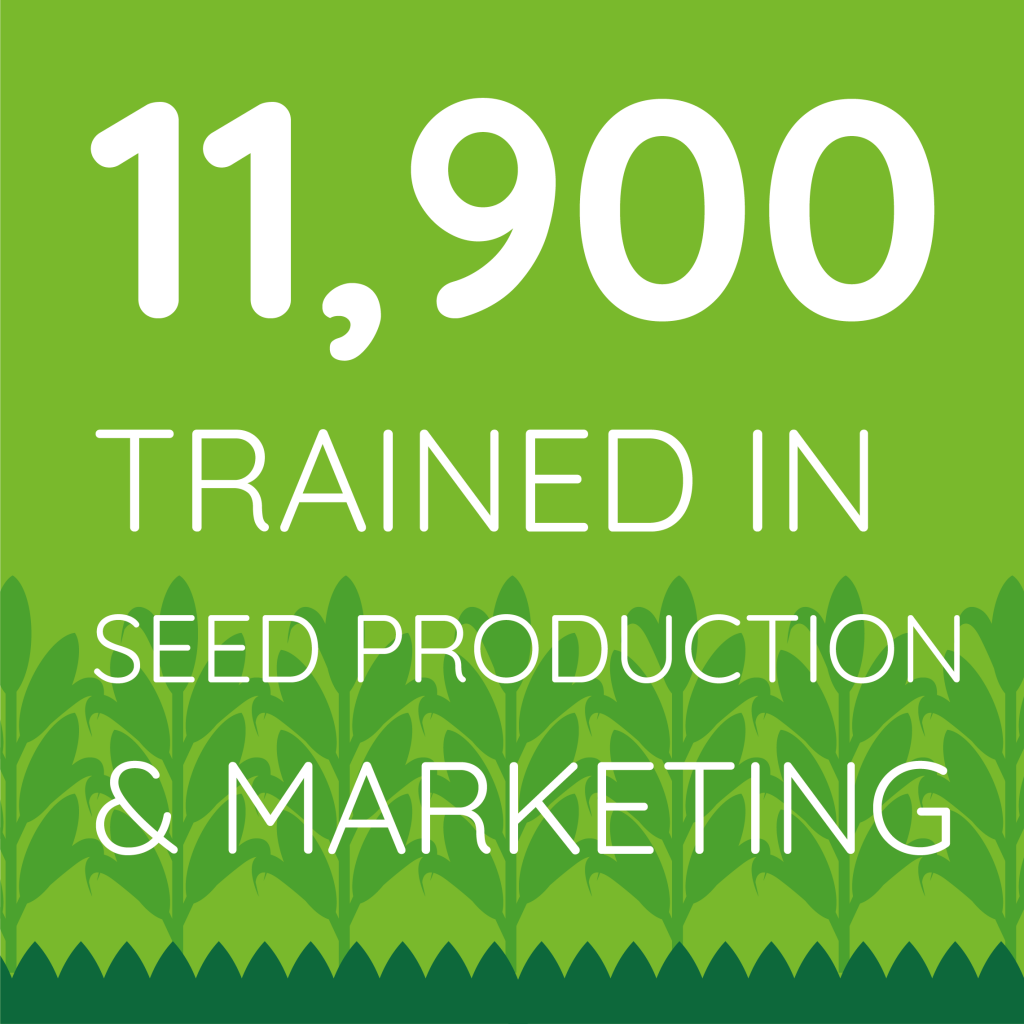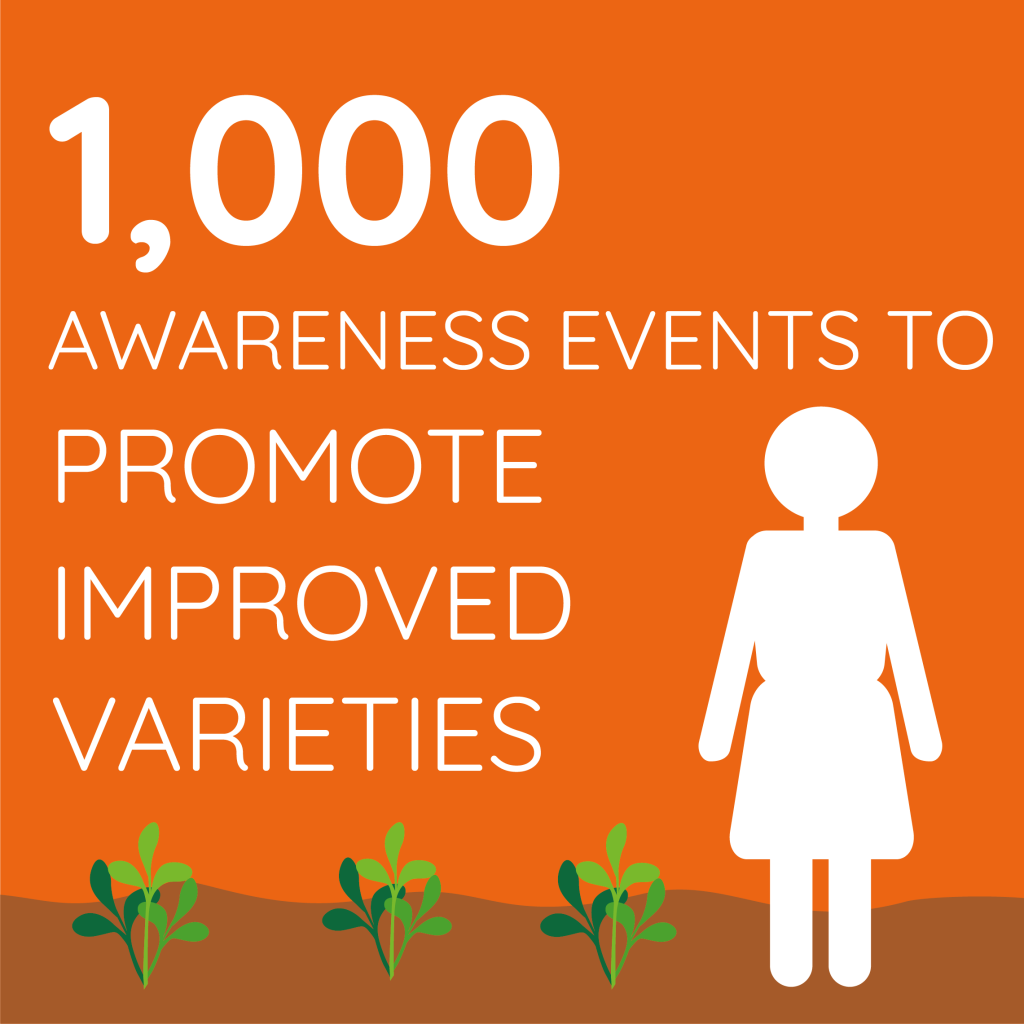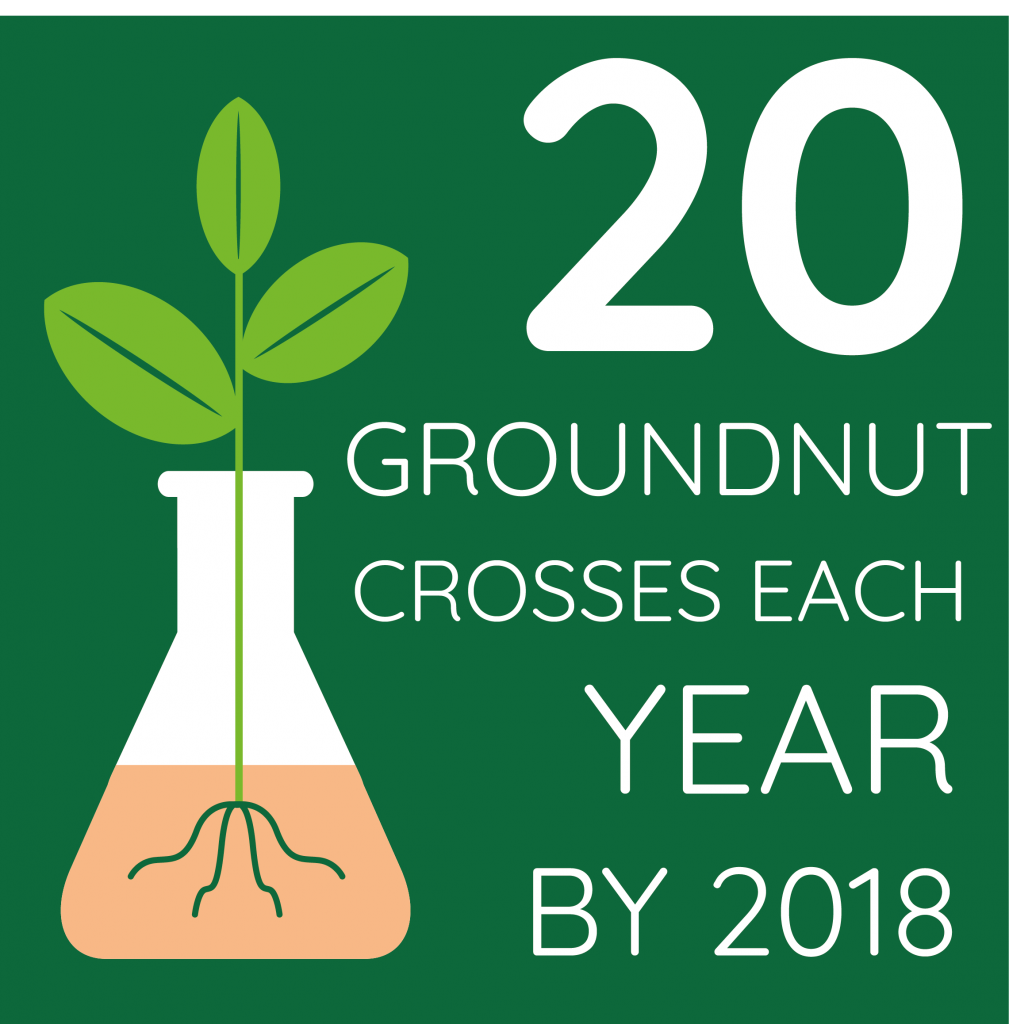Country Map
Please click on a country to find out more about the work of the Tropical Legumes projects.
The boundaries and names shown and the designations used on this map do not imply official endorsement or acceptance on the part of the Tropical Legumes projects or its partners.
Bangladesh
OVERVIEW
Main partner: Bangladesh Agricultural Research Institute (BARI)
Crops: Groundnut; chickpea
Phase: TLII and TLIII
CONTEXT
Chickpea is one of Bangladesh’s most important pulse crops, based on consumption. However, the domestic demand for this crop exceeds local supply. In 2013, the country imported 205,000 tons of chickpea worth US$127 million.a Improved domestic chickpea production could help address this deficit.
APPROACH
STRENGTHENING BREEDING CAPACITY
The Tropical Legumes projects strengthened chickpea breeding capacity in Bangladesh by focusing on releasing heat and drought-tolerant varieties. Heat-tolerant chickpea varieties are particularly useful to Bangladeshi farmers as chickpea sowing is often delayed due to the late harvesting of rice, which exposes plants to heat stress. To improve adoption rates and awareness of the improved varieties, small seed samples were distributed to 936 groundnut farmers and 110 chickpea farmers. The heat-tolerant chickpea variety is now in high demand, allowing farmers to better respond to domestic demand.a
DEVELOPING FARMER-PREFERRED VARIETIES
To identify high-yielding and resilient crop varieties, the Tropical Legumes projects conducted multiple farmer participatory variety selection trials (FPVS). The trials resulted in the release of improved groundnut and chickpea varieties. These varieties are early maturing, drought and heat tolerant, and contain high levels of essential proteins and micronutrients.
IMPROVING SEED DELIVERY SYSTEMS
To create sustainable seed delivery systems, the Tropical Legumes projects established public–private partnerships, working closely with local farmers and seed producers to increase the availability of quality seed. Some 35 training sessions were conducted for 830 farmers and 130 extension personnel on chickpea and groundnut production technologies. A total of 28 field days and three farmers’ fairs also took place with the participation of 1,346 legume farmers and extension personnel.b
OUTCOMES
Over the lifetime of the Tropical Legumes projects, the annual production of improved groundnut seed increased from 1.62 tons (2011) to 70 tons (2014 ).b
The Tropical Legumes initiatives estimatec that enhanced seed production has been sufficient for an increasing number of households to plant seed. In 2011, the amount of groundnut seed produced was sufficient for 81 households per year, but by 2014 this figure had grown to 3,500 households per year.
Estimatesc demonstrate the growing economic value of the improved varieties. In 2011, improved seed was sufficient to produce groundnut grain worth US$12,000 per year, increasing to US$605,000 in 2014.
REFERENCES
[a] ICRISAT: https://www.icrisat.org/new-variety-of-chickpea-helps-bangladeshi-farmers-fight-climate-change/
[b] Tropical Legumes II, Final Report: https://tropicallegumeshub.com/rc/tropical-legumes-ii-final-report/
[c] Calculations are based on an average plot size of 0.2 hectares per household, seeding rate of 0.12 tons/hectare for chickpea and 0.10 tons/hectare for groundnut, and a price/ton of US$503.90 for chickpea and US$452.70 for groundnut. These prices are averages taken from FAOSTAT figures for 2007–2017.
India
OVERVIEW
Main partner: Indian Council of Agricultural Research (ICAR)
Crops: Chickpea; groundnut; pigeonpea
Phase: TLII and TLIII
CONTEXT
In India, the Tropical Legumes initiatives prioritized improved high-yielding and climate-resilient chickpea, groundnut, and pigeonpea. All three are important crops that contribute significantly to household incomes and nutrition. In 2018, India produced 11,300,000 tons of chickpea grain, 7,000,000 tons of groundnut grain, and 4,300,000 tons of pigeonpea grain.a Worldwide, the country is the largest producer of chickpea and pigeonpea and the second-largest producer of groundnut. However, the contributions of these crops to household income and nutrition could be greatly enhanced. In a country where stunting currently affects 38% of under-fives, and 51% of women of reproductive age suffer from anemia, the essential proteins and nutrients that food legumes provide could help lift the burden of malnutrition.b
APPROACH
STRENGTHENING BREEDING CAPACITY
In order to enhance the efficiency and effectiveness of India’s crop improvement programs, the Tropical Legumes initiatives targeted new infrastructure, such as new irrigation facilities, and training for crop breeders and research technicians, including on genomics, molecular breeding, and the adoption of modern data collection tools. As a result, 78 elite chickpea breeding lines were successfully evaluated in national performance trials.c
DEVELOPING FARMER-PREFERRED VARIETIES
With support from the Tropical Legumes projects, India’s crop improvement programs developed new, improved varieties of chickpea, groundnut, and pigeonpea. These varieties were high-yielding, drought-tolerant, and able to withstand destructive pests and diseases. Farmers played a key role in their development: in the case of groundnut alone, more than 4,300 farmers participated in varietal trials between 2011 and 2015.c
IMPROVING SEED DELIVERY SYSTEMS
Efforts to roll out sustainable seed delivery systems involved public–private partnerships and collaborations with local seed producers, such as farmers, farmer groups, and informal seed companies.
OUTCOMES
The projects were able to achieve notable increases in the production of seed for groundnut and pigeonpea. Groundnut seed production increased more than four-fold from an annual average of 935 tons for the two-year period 2008–2009 to 3,830 tons in 2013–2014. There was also a huge increase in pigeonpea seed production from an annual average of just 3 tons in 2008–2009 to over 1,000 tons in 2012–2013.c
The Tropical Legumes initiatives estimated that enhanced seed production has been sufficient for an increasing number of households to plant seed. In 2008–2009, the annual average of groundnut seed produced would have been sufficient for 46,000 households, but by 2013–2014 this figure had grown to 190,000 households. For pigeonpea, the annual average increased from 1,600 households in 2008–2009 to more than 500,000 households in 2012–2013.
Estimatesd demonstrate the growing economic value of the improved varieties. In 2008–2009, improved seed was sufficient to produce groundnut grain worth an average US$4.5 million per year, increasing to US$28 million in 2013–2014. For pigeonpea, the equivalent figures were US$162,000 in 2008–2009, rising to an impressive US$50 million in 2012–2013.
Between 2011 and 2015, 207 training sessions were conducted for 12,604 farmers and 4,137 extension personnel on pigeonpea, chickpea, and groundnut production technologies, and 320 seed entrepreneurs were trained in chickpea seed production. Over 135,000 farmers participated in farm fairs organized by the University of Agricultural Sciences based in Dharwad and Raichur, Karnataka.e
LOOKING AHEAD
India’s crop improvement programs are continuing to work with partners across the country to build on the work undertaken with the Tropical Legumes projects to enhance the efficiency and effectiveness of breeding programs and seed systems.
REFERENCES
[a] FAOSTAT: www.fao.org/faostat/en/
[b] Global Nutrition Report 2020: https://globalnutritionreport.org/
[c] Tropical Legumes III, Final Narrative: https://tropicallegumeshub.com/rc/tropical-legumes-iii-final-report/
[d] Calculations are based on an average plot size of 0.2 hectares per household, seeding rate of 0.10 tons/hectare (groundnut) and 0.01 tons/hectare (pigeonpea), and a price/ton of US$452.70 (groundnut) and US$667.30 (pigeonpea). These prices are averages taken from FAOSTAT figures for 2007–2017.
[e] Tropical Legumes II, Final Report: https://tropicallegumeshub.com/rc/tropical-legumes-ii-final-report/
Download the PDF version of this country factsheet
Malawi
OVERVIEW
Main partner: Department of Agricultural Research Services (DARS)
Crops: Common bean; groundnut; pigeonpea; soybean
Phase: TLII
CONTEXT
In 2012, an adoption study found that soybean was Malawi’s primary cash crop, with over 80% of sample households producing and selling soybean. However, a lack of access to improved seed was the major reason for non-adoption of improved varieties, of both cowpea and soybean.
The Tropical Legumes projects identified the need for greater information on availability of seeds and an improved seed delivery system to boost productivity. At the end of Phase II, soybean producers in Malawi had begun to respond to the growing market price incentives, with over 75% of the soybean produced being marketed. The competitiveness of groundnut in the domestic, regional and international markets, however, was limited by low productivity, aflatoxin regulations, and stricter grades and standards.a
APPROACH
STRENGTHENING BREEDING CAPACITY
The Tropical Legumes projects strengthened breeding capacity by improving physical infrastructure, and human capacity through training sessions and demonstrations. In Malawi, 20-50 farmers’ field days were conducted annually by NARS and ICRISAT to upgrade the skills of farmers and stakeholders on improved varieties and integrated crop management (ICM).
Pigeonpea field days and farmer and seed fairs trained 1,142 farmers and 404 extension staff in new seed production and processing technologies as well as and safe seed storage. To encourage production and adoption of the improved varieties, 20,000 groundnut and pigeonpea seed packets were distributed to farmers.a
DEVELOPING FARMER-PREFERRED VARIETIES
To identify high-yielding and resilient crop varieties, the Tropical Legumes projects conducted multiple farmer participatory variety selection trials (FPVS) and evaluations. For pigeonpea, 52 trials were conducted with 82 demonstrations provided to 1,766 farmers. These initiatives led to the release of improved common bean, pigeonpea and soybean varieties.
IMPROVING SEED DELIVERY SYSTEMS
To create sustainable seed delivery systems, the Tropical Legumes projects brokered public–private partnerships between agro-processors and traders.
As a result of interventions into pigeonpea production, climate-resilient varieties spread to new niche markets in central and northern Malawi. Additionally, the demand for pigeonpea in Eastern and Southern Africa continues to rise both for domestic consumption and as well as for the export market.a
OUTCOMES
Over the lifetime of the Tropical Legumes projects, the average annual production of improved pigeonpea increased from an average of 48 tons/year (2007–2010) to 475 tons/year (2011–2014). Annual production of improved common bean seed increased from 858 tons (2011) to 1,000 tons (2014) and improved soybean increased from 4 tons (2008) to 58 tons (2010). Increased production was higher for groundnut, with an average annual production of 403 tons/year (2007–2009) rising to 3,495 tons/year (2012–2014).a
The Tropical Legumes initiatives estimateb that enhanced seed production has been sufficient for an increasing number of households to plant seed. In 2007–2010, the amount of pigeonpea seed produced was sufficient for 23,800 households per year on average, but by 2011–2014 this figure had grown to 237,300 households. Growth was also high for groundnut, with the annual average increasing from 20,000 households in 2007–2009 to 174,700 households in 2012–2014.
Estimatesb demonstrate the growing economic value of the improved varieties. In 2007–2009 improved seed was sufficient to produce groundnut grain worth an average US$1.7 million per year, increasing to US$16 million in 2012–2014. For pigeonpea the equivalent figures were US$3 million in 2007–2010, rising to US$41 million in 2011–2014.
REFERENCES
[a] Tropical Legumes II, Final Report: https://tropicallegumeshub.com/rc/tropical-legumes-ii-final-report/
[b] Calculations are based on an average plot size of 0.2 hectares per household, seeding rate of 0.10 tons/hectare for groundnut and 0.01 for pigeonpea, and a price/ton of US$452.70 for groundnut and US$667.30 for pigeonpea. These prices are averages taken from FAOSTAT figures for 2007–2017.
Zimbabwe
OVERVIEW
Main partner: Department of Agricultural Research & Extension (AREX)
Crops: Common bean
Phase: TLII
CONTEXT
The majority of Zimbabwe’s population consume common bean, which provides vital protein and micronutrients to children, pregnant women, and young children.a The Tropical Legumes projects aimed to improve legume varieties and production to address Zimbabwe’s vulnerability to climate change and malnutrition.
Common bean is also among the top five crops providing income to farmers and traders in Zimbabwe. Bean trade is not limited to within the country but extends to South Africa, Malawi, Zambia, Mozambique, and Tanzania. The Tropical Legumes projects aimed to improve crop resilience and production to allow smallholder farmers to better tap into this market.
APPROACH
STRENGTHENING BREEDING CAPACITY
The Tropical Legumes projects strengthened breeding capacity by improving physical infrastructure and providing training sessions and demonstrations. For example, eight bean breeders from Ethiopia, Kenya, Uganda, and Zimbabwe completed the Breeding Management System (BMS) multi-year training course under the Generation Challenge Program. In addition, one student in Zimbabwe completed his doctorate at Free State University, RSA, choosing to focus his research on breeding. His university expenses were covered by the Tropical Legumes projects, as was most of his research.
DEVELOPING FARMER-PREFERRED VARIETIES
To identify high-yielding and resilient crop varieties, the Tropical Legumes projects conducted multiple farmer participatory variety selection trials (FPVS). Subsequently, 377 drought-tolerant lines were evaluated, of which six were identified as the best, with average yields ranging from 1,100 kg/ha to above 1,400 kg/ha. Improved common bean varieties with higher disease and drought tolerance were released.b
IMPROVING SEED DELIVERY SYSTEMS
To create sustainable seed delivery systems, the Tropical Legumes projects supported the expansion of seed system activities to Zimbabwe. Seed producers were supported by a range of public–private partners (NGOs, farmer organizations and public extension) providing complementary services such as skills and knowledge enhancement and training, awareness creation and seed quality control. Public and private breeding programs also contributed to popularizing improved varieties. Unfortunately, despite the best efforts of the Tropical Legumes projects, common bean production decreased between 2011 and 2014, demonstrating that more work is needed to improve the country’s seed systems.
REFERENCES
[a] FAOSTAT: www.fao.org/faostat
[b] Tropical Legumes II, Final Report: https://tropicallegumeshub.com/rc/tropical-legumes-ii-final-report/
Mozambique
OVERVIEW
Main partner: Instituto de Investigação Agraria de Moçambique (IIAM)
Crops: Cowpea; groundnut; soybean
Phase: TLII
CONTEXT
An adoption study conducted in 2012 found that soybean was the primary cash crop in Mozambique, with over 80% of sample households producing and selling it to generate cash incomes. However, only 25% of those surveyed had adopted improved soybean varieties.
The survey revealed that a lack of access to improved seed was the major reason for non-adoption of improved varieties. The Tropical Legumes projects identified the need for information on availability of seeds and an improved seed delivery system to boost productivity.a
APPROACH
STRENGTHENING BREEDING CAPACITY
The Tropical Legumes projects focused on improving physical infrastructure and conducting training sessions and demonstrations to strengthen breeding capacity. For example, farmer-preferred cowpea varieties were distributed to government agencies, community-based organizations and farmers’ associations to establish demonstration plots and community seed multiplication fields.
To support breeder and demonstration plots, 6.15 tons of cowpea seed was supplied for foundation production between 2011 and 2014. Cowpea demonstration plots were set up in the fields of 300 farmers (118 females; 182 males) and training was provided on cowpea variety characteristics, variety selection and crop management.a
DEVELOPING FARMER-PREFERRED VARIETIES
To identify high-yielding and resilient crop varieties, the Tropical Legumes projects conducted multiple farmer participatory variety selection trials (FPVS). The trials resulted in improved varieties of groundnut, soybean and cowpea that are drought-tolerant, rosette- and wilt-resistant, and contain high levels of essential proteins and micronutrients.
IMPROVING SEED DELIVERY SYSTEMS
To create sustainable seed delivery systems, the Tropical Legumes projects established public–private partnerships, involving farmers’ associations, and workshops were organized in each community to introduce farmers to FPVS and on-farm demonstrations on variety selection and better crop management practices.
To encourage adoption of new varieties, around 450,000 small packs of soybean seeds and 9,000 packs of cowpea seeds were distributed and training in seed production was provided for 2,162 farmers.a
OUTCOMES
Over the lifetime of the Tropical Legumes projects, the annual production of improved groundnut increased from an average of 4.2 tons (2011) to 65 tons (2014).a
The Tropical Legumes initiatives estimateb that enhanced seed production has been sufficient for an increasing number of households to plant seed. In 2011, the amount of groundnut seed produced was sufficient for 214 households, but by 2014 this figure had grown to 3,200 households.
Estimatesb demonstrate the growing economic value of the improved varieties. In 2011 improved seed was sufficient to produce groundnut grain worth US$6,400, increasing to US$99,000 in 2014.
REFERENCES
[a] Tropical Legumes II, Final Report: https://tropicallegumeshub.com/rc/tropical-legumes-ii-final-report/
[b] Calculations are based on an average plot size of 0.2 hectares per household, and a seeding rate of 0.10 tons/hectare and price/ton of US$452.70 for groundnut. These prices are averages taken from FAOSTAT figures for 2007–2017.
Tanzania
OVERVIEW
Main partner: Tanzania Agricultural Research Institute (TARI)
Crops: Chickpea; common bean; groundnut; pigeonpea
Phase: TLII and TLIII
CONTEXT
In 2018, Tanzania produced 1,210,000 tons of common bean grain (the highest in Africa), 108,000 tons of chickpea grain, 940,000 tons of groundnut grain, and 316,000 tons of pigeonpea grain.a All four of these crops are key food legumes in the country, and they have the potential to generate many more economic and livelihood benefits. Packed with essential proteins and nutrients, they could also be used more strategically to address the country’s widespread malnutrition levels, which cause economic losses of around 2.65% of GDP every year.b
APPROACH
STRENGTHENING BREEDING CAPACITY
Renovating screenhouses, installing cold rooms, and building new irrigation facilities were some of the critical infrastructure improvements that the Tropical Legumes projects introduced to improve the performance of Tanzania’s breeding programs. The initiatives also enhanced the skills of crop breeders, including next generation scientists, and provided training in the use of modern breeding methods. By 2018, for instance, Tanzania’s groundnut improvement program was managing 100 crosses and three crop generations per season.c At this rate, future varieties can be bred in a span of just five years.
DEVELOPING FARMER-PREFERRED VARIETIES
The Tropical Legumes initiatives helped Tanzania’s crop improvement programs to become more efficient and effective – enabling farmers to keep pace with rapidly changing environmental conditions. Between 2007 and 2018, improved, high-yielding and resilient food legume varieties were developed. Farmers played an important role in variety selection – helping to more precisely target environmental conditions and market opportunities. For instance, over 3,900 farmers were involved in pigeonpea trials from 2011 to 2015.c
IMPROVING SEED DELIVERY SYSTEMS
The Tropical Legumes initiatives worked closely with local farmers and seed producers to increase the availability of quality seed. They provided a vital outlet in areas where markets for seed were absent or weak.
OUTCOMES
As a result of investments made by the Tropical Legumes initiatives, production of the improved seed increased substantially. The average annual amount of groundnut seed produced increased from 125 tons in the three-year period 2007–2010 to 3,700 tons in 2016–2018. Over the same period, the amount of common bean seed increased from an average of 633 tons/year to an average of 1,900 tons/year.c
For pigeonpea, production of improved seed increased from an annual average of 69 tons/year in the three-year period 2008–2010 to 357 tons/year in 2012–2014. Production of improved chickpea seed also grew from 131 tons/year in 2011 to 785 tons/year in 2014.c
LOOKING AHEAD
The gains of the Tropical Legumes initiatives are now being consolidated by a new project, Accelerated Varietal Improvement and Seed Delivery of Legumes and Cereals in Africa (AVISA), which is building on the experience of its predecessors to continue enhancing the efficiency and effectiveness of African breeding programs and seed systems.
Despite progress, there are still challenges to address. Early generation seed production remains limited and is far below what the country needs, and weak seed distribution systems mean that seed continues to allude the farmers who need it to raise their productivity and strengthen their resilience. In addition, there are low public and private investments in seed production and weak linkages exist between grain and seed markets.
Future work will focus on encouraging farmers to form seed companies, strengthening seed distribution networks, providing training in seed business, promoting mechanization, and encouraging increased private sector investments.
REFERENCES
[a] FAOSTAT: www.fao.org/faostat/en
[b] https://www.smarterfutures.net/wp-content/uploads/2013/12/Tanzania-Fortification_Action_Plan.pdf
[c] Tropical Legumes III, Final Narrative: https://tropicallegumeshub.com/rc/tropical-legumes-iii-final-report/
Download the PDF version of this country factsheet
Uganda
OVERVIEW
Main partner: National Agricultural Research Organization (NARO)
Crops: Common bean; groundnut
Phase: TLII and TLIII
CONTEXT
The Tropical Legumes initiatives prioritized improved common bean and groundnut varieties in Uganda. In 2018, the country produced more than 1,000,000 tons of common bean grain, the second highest in Africa, and over 240,000 tons of groundnut grain.a However, despite the economic and nutritional benefits of these two crops, they could play a far greater role in the national economy and help to address Uganda’s malnutrition burden, which afflicts 29% of under-fives with stunting and 28% of women of reproductive age with anemia.b
APPROACH
STRENGTHENING BREEDING CAPACITY
New irrigation facilities and other infrastructural improvements have been key to improving the performance of Uganda’s crop breeding programs. Another area of investment was capacity strengthening, offering training sessions on genomics, molecular breeding, data collection, and other critical skills that will help the country’s crop breeders meet future climate challenges. As a result of the support provided by the Tropical Legumes projects, 60 groundnut crosses and 75 common bean crosses were being made each year by 2018.c
DEVELOPING FARMER-PREFERRED VARIETIES
With support from the Tropical Legumes projects, Uganda’s crop improvement programs developed climate-resilient varieties of common bean and groundnut. These new varieties are high-yielding, drought-tolerant, and resistant to a range of pests and diseases, as required by Uganda’s farmers. Between 2015 and 2018, Ugandan communities hosted more than 800 awareness-raising events: demonstration trials, field days, and exhibitions to promote the new common bean varieties.c
IMPROVING SEED DELIVERY SYSTEMS
Seed delivery systems were enhanced through public–private partnerships and the inclusion of local seed producers, including farmers, farmer groups, and informal seed companies. Over 19,400 people received training in seed production, management, and marketing.c
OUTCOMES
As a result of the interventions of the Tropical Legumes projects, an annual average of 2,299 tons/year of certified common bean seed was produced in the two-year period 2011–2012, increasing to 7,842 tons/year in 2017–2018. For groundnut, over the same period, an annual average of 62 tons/year was produced in 2011–2012, which increased to 619 tons/year in 2017–2018.c
The Tropical Legumes initiatives estimated that over the two-year period 2011–2012, the amount of common bean seed produced would have been sufficient for 164,000 households per year on average to plant the seed, but by 2017–2018 this figure had grown to 560,000 households. For groundnut, the annual average increased more than tenfold, from 3,000 households for the period 2011–2012 to over 30,000 households in 2017–2018.
Estimatesd demonstrate the growing economic value of the improved varieties. In 2011–2012, the improved seed was sufficient to produce common bean grain worth an average US$26 million per year, increasing to US$109 million in 2017–2018. For groundnut, the equivalent figures grew from US$209,000 in 2011–2012 to just over US$2 million in 2017–2018.
Specific efforts were made to increase women’s adoption of the new varieties. These centered on a training program that sensitized crop breeders and social scientists to gender issues, and studies that explored the traits most attractive to women. Beans that took less time to cook were particularly attractive – as they reduced fuel consumption and freed up time for other activities.c
LOOKING AHEAD
The gains of the Tropical Legumes initiatives are now being consolidated by a new project, Accelerated Varietal Improvement and Seed Delivery of Legumes and Cereals in Africa (AVISA), which is building on the experience of its predecessors to continue enhancing the efficiency and effectiveness of breeding programs and seed systems in Uganda and other African nations. Remaining challenges include the limited availability of early generation seed, the slow pace of variety development, the limited capital available for seed producers, and the insufficient amount of seed produced by the private sector. In order to address these challenges, future work will focus on efforts to catalyze private sector investments, expanding seed distribution networks, and developing and strengthening links between key players such as farmers, processors, seed companies, and seed dealers.
REFERENCES
[a] FAOSTAT: www.fao.org/faostat/en
[b] Global Nutrition Report 2020: https://globalnutritionreport.org/
[c] Tropical Legumes III, Final Narrative: https://tropicallegumeshub.com/rc/tropical-legumes-iii-final-report/
[d] Calculations are based on an average plot size of 0.2 hectares per household, seeding rate of 0.10 tons/hectare (groundnut) and 0.07 tons/hectare (common bean), and a price/ton of US$452.70 (groundnut) and US$601.70 (common bean). These prices are averages taken from FAOSTAT figures for 2007–2017.
Download the PDF version of this country factsheet
Kenya
OVERVIEW
Main partner: Kenya Agricultural and Livestock Research Organization (KALRO)
Crops: Chickpea; common bean; soybean
Phase: TLII
CONTEXT
Legumes are an important source of income in Kenya, with dry beans contributing KES 13.18 billion to the national economy in 2016. They are also a key source of protein, especially for the rural and urban poor, and are mainly grown by smallholder farmers.a
APPROACH
STRENGTHENING BREEDING CAPACITY
The Tropical Legumes projects strengthened breeding capacity by improving physical infrastructure, and boosting human capacity through training sessions and demonstrations. In Kenya, 1,898 farmers and legume seed producers participated in specialised training and 1,581 participated in farmer field days and farmers’ fairs held at on-farm and on-station trial sites.
In addition, 25,000 common bean and soybean seed packets were distributed to increase adoption rates.b
DEVELOPING FARMER-PREFERRED VARIETIES
To identify high-yielding and resilient crop varieties, the Tropical Legumes projects conducted multiple farmer participatory variety selection trials (FPVS). The trials resulted in improved common bean, soybean and chickpea varieties being released. These are high-yielding, drought-tolerant and resistant to a range of pests and diseases, contain high levels of essential proteins and micronutrients, and cook faster.
IMPROVING SEED DELIVERY SYSTEMS
To create sustainable seed delivery systems, the Tropical Legumes projects established public–private partnerships. In Kenya, platforms were established or strengthened to link bean value chain actors (seed producers, grain traders, researchers, extension staff and other input suppliers) in order to develop the bean sub-sectors. To support these platforms, bean breeders from Kenya completed the Breeding Management System (BMS) multi-year training course of the Generation Challenge Program and training sessions were provided on improved bean production of canning beans.
OUTCOMES
Over the lifetime of the Tropical Legumes projects the average annual production of improved soybean seed increased from an average of 17 tons/year (2007–2009) to 72 tons/year (2012–2014). Annual production of improved common bean seed increased from an average of 407 tons/year to 1,582 tons/year over the same period. In addition, production of improved chickpea seed increased from 87 tons (2011) to 994 tons (2014).b
The Tropical Legumes initiatives estimatec that enhanced seed production has been sufficient for an increasing number of households to plant seed. In 2007–2009, the amount of soybean seed produced was sufficient for 825 households per year on average, but by 2012–2014 this figure had grown to 3,500 households. Growth was even higher for common bean, with the annual average increasing from 29,000 households in 2008–2010 to 113,000 households in 2016–2018. For chickpea, seed produced was sufficient for 3,600 households in 2011, rising to 41,000 households in 2014.
Estimatesc demonstrate the growing economic value of the improved varieties. In 2007–2009 improved seed was sufficient to produce soybean grain worth an average US$89,000 per year, increasing to US$590,000 in 2012–2014. For common bean, the equivalent figures were US$1.5 million in 2007–2009, rising to US$8.4 million in 2012–2014. For chickpea, value rose from US$129,000 in 2011 to US$1.4 million in 2014.
REFERENCES
[a] FAOSTAT: www.fao.org/faostat/en/
[b] Tropical Legumes II, Final Report: https://tropicallegumeshub.com/rc/tropical-legumes-ii-final-report/
[c] Calculations are based on an average plot size of 0.2 hectares per household; seeding rate of 0.12 tons/hectare for chickpea, 0.07 for common bean and 0.10 for soybean; and a price/ton of US$503.90 for chickpea, US$601.70 for common bean and US$704.90 for soybean. These prices are averages taken from FAOSTAT figures for 2007–2017.
Ethiopia
OVERVIEW
Main partner: Ethiopian Institute of Agricultural Research (EIAR)
Crops: Chickpea; Common bean
Phase: TLII and TLIII
CONTEXT
Many Ethiopian households rely on chickpea and common bean for income and food. Access to more resilient varieties would help Ethiopian farmers to adapt and improve their production.
In 2018, Ethiopia produced 520,000 tons of chickpea grain and 610,000 tons of common bean grain.a
APPROACH
STRENGTHENING BREEDING CAPACITY
The Tropical Legumes projects, together with partners, strengthened capacity by bringing in new techniques, training, and equipment to speed up the process of developing improved seed varieties. The projects introduced modernized breeding activities and improved infrastructure, including installing improved irrigation and storage facilities. They also provided training for crop breeders, covering the use of genomic tools and digital technologies. As a result, Ethiopia’s chickpea breeding pipeline can now manage 81 crosses per year – up from 24 in 2007 – accelerating the development of future varieties.b
DEVELOPING FARMER-PREFERRED VARIETIES
To identify resilient crop varieties with high yields, the Tropical Legumes projects conducted trials with farmers to select improved varieties that met their needs and those of the wider market. The varieties developed are high yielding, drought tolerant and resistant to a range of pests and diseases; they also have high levels of essential proteins and micronutrients. Improved common bean varieties have been highly successful. Six new varieties have completely replaced the vulnerable 40-year-old varieties that previously dominated the market.b
IMPROVING SEED DELIVERY SYSTEMS
To ensure the new varieties reached farmers, the initiatives prioritized efforts to improve seed delivery systems. From 2015 to 2018, 2,800 demonstrations and 56 field days gave thousands of chickpea farmers an opportunity to witness the improved performance of new varieties.b The Tropical Legumes initiatives also helped set up and strengthen platforms involving farmers, seed companies, governmental organizations, and extension workers, and encouraged private and public sector investments in certified quality seed production.
OUTCOMES
Over the lifetime of the Tropical Legumes projects the average annual production of improved chickpea seed tripled, from an average of 1,118 tons/year (2008–2010) to 3,416 tons/year (2016–2018). Annual production of improved common bean seed doubled, from an average of 2,570 tons/year to 5,621 tons/year over the same period.b
The Tropical Legumes initiatives estimatec that enhanced seed production has been sufficient for an increasing number of households to plant seed. In 2008–2010, the amount of chickpea seed produced was sufficient for 46,000 households per year on average, but by 2016–2018 this figure had grown to 142,000 households. Growth was even higher for common bean, with the annual average increasing from 183,000 households in 2008–2010 to 401,000 households in 2016–2018.
Estimatesc demonstrate the growing economic value of the improved varieties. In 2008–2010 improved seed was sufficient to produce chickpea grain worth an average US$6 million per year, increasing to US$28 million in 2016–2018. For common bean the equivalent figures were US$29 million in 2008–2010, rising to US$79 million in 2016–2018.
Alongside other initiatives, these achievements contributed to national productivity gains. Ethiopia’s annual chickpea productivity increased from an average of 1.3 tons per hectare in 2008–2010 to 2.0 tons per hectare in 2016–2018, and common bean productivity rose over this same period – from an average of 1.3 tons per hectare in 2008–2010 to 1.6 tons per hectare on average in 2016–2018.a
Specific efforts were made to target women farmers. In Adaa District, for instance, the projects combined the delivery of new chickpea varieties with a training program that included production techniques, product management, and quality enhancement. These interventions helped raise yields. At one location, Gerbicha Kebele, women produced on average 2.6 tons per hectare, above the national average of 2 tons per hectare. Two women exceeded this amount, producing 3 tons per hectare.b
LOOKING AHEAD
Despite the extensive work carried out by many organizations to strengthen Ethiopia’s seed systems, challenges remain. Some farmers continue to achieve only modest yields, and efforts are still needed to increase seed production and in parallel stimulate additional demand in the marketplace. A new project, the Accelerated Varietal Improvement and Seed Delivery of Legumes and Cereals in Africa (AVISA), will build on the successes of the Tropical Legumes projects and continue enhancing the efficiency and effectiveness of breeding programs and seed systems in Ethiopia and other African nations.
REFERENCES
[a] FAOSTAT: www.fao.org/faostat/en/
[b] Tropical Legumes III, Final Narrative: https://tropicallegumeshub.com/rc/tropical-legumes-iii-final-report/
[c] Calculations are based on an average plot size of 0.2 hectares per household, seeding rate of 0.12 tons/hectare for chickpea and 0.07 for common bean, and a price/ton of US$503.90 for chickpea and US$601.70 for common bean. These prices are averages taken from FAOSTAT figures for 2007–2017.
Download the PDF version of this country factsheet
Senegal
OVERVIEW
Main partner: Institut Sénégalais de Recherches Agricoles (ISRA)
Crops: Groundnut
Phase: TLII
CONTEXT
Senegal was once one of the biggest groundnut producers in the world.a The legume was a major source of employment, income and foreign exchange. The Tropical Legumes projects identified a need to reassess market prospects and highlight opportunities for the country to regain its market share. In light of Senegal’s vulnerability to drought, the Tropical Legumes projects aimed to improve legume varieties and production.
APPROACH
STRENGTHENING BREEDING CAPACITY
The Tropical Legumes projects strengthened breeding capacity by improving physical infrastructure, and providing training sessions and demonstrations. Training sessions were provided to key actors in order to raise awareness about improved varieties, increase adoption rates and strengthen breeding capacity. A breeder and a pathologist from the six project countries, including Senegal, benefited from a week of training at ICRISAT-Mali on groundnut breeding techniques and disease management. A breeder from Senegal also participated in the Integrated Breeding-Multi Year Course (IB-MYC), sponsored by the Generation Challenge Program.b
DEVELOPING FARMER-PREFERRED VARIETIES
To identify high-yielding and resilient crop varieties, the Tropical Legumes projects conducted multiple participatory variety selection trials (PVS). As a result, improved groundnut varieties were released that demonstrated a yield advantage of up to 42% over the local varieties grown by farmers, with some yielding over 3 tons/ha in some locations.b
On-farm trials by ISRA facilitated wide adoption of the extra-early maturing varieties in Louga in the northern region of Senegal, where groundnut is grown by almost all households, with the active participation of women. Farmer meetings were also organized in all the villages to raise awareness of the new varieties.
IMPROVING SEED DELIVERY SYSTEMS
To create sustainable seed delivery systems, the Tropical Legumes projects established public–private partnerships. In addition, to sustain improved groundnut production, on the job training was provided to NARS partners in Senegal on adoption studies, impact assessment, market value chain analysis and institutional analysis. Unfortunately, despite the best efforts of the Tropical Legumes projects, groundnut production decreased between 2010 and 2013, demonstrating that more work is needed to improve the country’s seed systems.
REFERENCES
[a] FAOSTAT: www.fao.org/faostat
[b] Tropical Legumes II, Final Report: https://tropicallegumeshub.com/rc/tropical-legumes-ii-final-report/
Niger
OVERVIEW
Main partner: Institut National de la Recherche Agronomique du Niger (INRAN)
Crops: Cowpea; groundnut
Phase: TLII
CONTEXT
A survey in Niger revealed that non-availability of seed was considered the main constraint to the adoption of new varieties. The Tropical Legumes projects therefore aimed to provide improved varieties and develop a sustainable seed system to increase their availability, thereby boosting a vital source of income for smallholder farmers.
APPROACH
STRENGTHENING BREEDING CAPACITY
The Tropical Legumes projects strengthened breeding capacity by improving physical infrastructure, and human capacity through training sessions and demonstrations. ICRISAT coordinated groundnut production training for over 1,100 farmers in Niger (85% women) including training 44 extension agents in integrated crop management (ICM) and integrated aflatoxin management.a
To increase breeding capacity further, the projects invested in training farmers and key actors in production. In Niger, 784 farmers were trained in cowpea production techniques and storage and a total of 163 trainings were conducted for 90 farmers and extension agents on legume seed agronomics, production and post-harvest management techniques.a
DEVELOPING FARMER-PREFERRED VARIETIES
To identify high-yielding and resilient crop varieties, the Tropical Legumes projects conducted multiple farmer participatory variety selection trials (FPVS). As a result, improved groundnut and cowpea varieties were released and promoted on TV and radio programmes.
IMPROVING SEED DELIVERY SYSTEMS
To create sustainable seed delivery systems, the Tropical Legumes projects established public–private partnerships and provided key actors with seed system training workshops. For example, 10 participants were trained in small-scale business and marketing strategies and 30,000 seed packets were distributed.a
As a result, strong platforms for cowpea seed production and delivery have been successfully set up in Niger. The platforms include farmers’ associations, extension agents, processors, agro-dealers, and seed traders, producers and certifying agencies.
In addition, variety promotion at FPVS and seed production schemes resulted in the adoption of improved groundnut varieties increasing by 14% from 2008 to 2011.a
OUTCOMES
Over the lifetime of the Tropical Legumes projects, the average annual production of improved groundnut increased from an average of 19 tons/year (2007–2009) to 393 tons/year (2012–2014). Average annual production of improved cowpea seed increased from 305 tons to 1,480 tons over the same period.a
The Tropical Legumes initiatives estimateb that enhanced seed production has been sufficient for an increasing number of households to plant seed. In 2007–2009, the amount of groundnut seed produced was sufficient for 900 households per year on average, but by 2012–2014 this figure had grown to 19,600 households. Growth was also high for cowpea, with the annual average increasing from 76,000 households to 370,000 households across the same period.
Estimatesb demonstrate the growing economic value of the improved varieties. In 2007–2009 improved seed was sufficient to produce groundnut grain worth an average US$38,700 per year, increasing to US$891,000 in 2012–2014. For cowpea the equivalent figures were US$1.7 million in 2007–2009, rising to US$11 million in 2012–2014.
REFERENCES
[a] Tropical Legumes II, Final Report: https://tropicallegumeshub.com/rc/tropical-legumes-ii-final-report/
[b] Calculations are based on an average plot size of 0.2 hectares per household, seeding rate of 0.10 tons/hectare for groundnut and 0.02 for cowpea, and a price/ton of US$452.70 for groundnut and US$465.20 for cowpea. These prices are averages taken from FAOSTAT figures for 2007–2017.
Nigeria
OVERVIEW
Main partner: Institute for Agricultural Research (IAR)
Crops: Cowpea; groundnut; soybean
Phase: TLII and TLIII
CONTEXT
In Nigeria, the Tropical Legumes initiatives prioritized improved high-yielding and climate-resilient cowpea, groundnut, and soybean varieties. These are three strategic crops for the country. In 2018, Nigeria produced 2,600,000 tons of cowpea grain, 760,000 tons of soybean grain, and 2,900,000 tons of groundnut grain, making it the largest cowpea and groundnut producer in Africa.a Although these crops contribute to household incomes and nutrition, more resilient and higher-yielding varieties could provide more substantial economic benefits and address widespread malnutrition.
APPROACH
STRENGTHENING BREEDING CAPACITY
Investments in new infrastructure, including the installation of irrigation facilities and storage facilities, were a key priority to improve the performance of Nigeria’s crop improvement programs. The Tropical Legumes projects also prioritized training for crop breeders, introducing modern breeding techniques and other essential skills to meet future climate challenges. As a result of these changes, for instance, Nigeria’s cowpea crop improvement program was making 50 crosses per year by 2018b – allowing future varieties to come down the pipeline much more rapidly.
DEVELOPING FARMER-PREFERRED VARIETIES
With support from the Tropical Legumes initiatives, Nigeria’s crop improvement programs developed improved, climate-resilient varieties of cowpea, groundnut, and soybean. The varieties of all three crops are high-yielding, drought-tolerant, and disease- and pest-resistant, meeting the needs of Nigerian farmers. Over 1,000 awareness events (demonstration trials, field days, and exhibitions) promoted the new varieties to farmers.b
IMPROVING SEED DELIVERY SYSTEMS
Public–private partnerships were key to the creation and development of sustainable seed delivery systems, and local seed producers ensured that seed could be multiplied at the required scale. Some 13,200 people were trained in good seed production, management, and marketing practices, as well as the safe use of pesticides, and harvesting and post-harvesting handling.b
OUTCOMES
Over the course of the initiatives, annual average groundnut seed production increased from 50 tons (2008–2010) to 3,200 tons (2016–2018), average cowpea seed production increased from 330 tons (2008–2010) to 2,500 tons (2016–2018), and average soybean seed production increased from 266 tons (2008–2009) to 2,423 tons (2013–2014). In project intervention areas, improved groundnut crops registered an overall adoption rate of 44% where yields reached an average of over 220 kilograms per hectare and generated income increases of an estimated US$135 per hectare.b
The Tropical Legumes initiatives estimatec that enhanced seed production has been sufficient for an increasing number of households to plant the seed. In 2008–2010, the amount of groundnut seed produced was sufficient for 2,400 households per year on average, but by 2016–2018 this figure had grown to 162,000 households. Over the same period, cowpea seed was potentially sufficient for 633,000 households annually, up from 82,000, while soybean seed was potentially sufficient for 121,000 households in 2013–2014, up from 13,000 in 2008–2009.
Estimatesc demonstrate the growing economic value of the improved varieties. In 2008–2010 improved seed was sufficient to produce cowpea grain worth an average US$280,000 per year, increasing to US$14 million in 2016–2018. For groundnut, the equivalent figures were US$7 million in 2008–2010, rising to US$52 million in 2016–2018. For soybean, these figures rose from US$1 million in 2008–2009 to almost US$15 million in 2013–2014.
LOOKING AHEAD
The gains of the Tropical Legumes initiatives are now being consolidated by a new project, the Accelerated Varietal Improvement and Seed Delivery of Legumes and Cereals in Africa (AVISA), which is building on the experience of its predecessors to continue enhancing the efficiency and effectiveness of breeding programs and seed systems in Nigeria. Challenges that remain include limited interest and investment by private seed companies, limited availability of early generation seed, a lack of mechanization, and weak publicity for the newly released varieties. Future work will focus on several areas, such as enhancing training on seed production, promoting mechanization, and improving links between agro-input providers and community seed production.
REFERENCES
[a] FAOSTAT: www.fao.org/faostat/en/
[b] Tropical Legumes III, Final Narrative: https://tropicallegumeshub.com/rc/tropical-legumes-iii-final-report/
[c] Calculations are based on an average plot size of 0.2 hectares per household; seeding rate of 0.02 tons/hectare for cowpea and 0.10 tons/hectare for groundnut and soybean; and a price/ton of US$465.20 for cowpea, US$452.70 for groundnut, and US$704.90 for soybean. These prices are averages taken from FAOSTAT figures for 2007–2017.
Download the PDF version of this country factsheet
Mali
OVERVIEW
Main partner: Institute of Rural Economy (Institut d’Economie Rurale [IER])
Crops: Cowpea; groundnut
Phase: TLII and TLIII
CONTEXT
In Mali, the Tropical Legumes initiatives prioritized improved high-yielding and climate-resilient cowpea and groundnut: crops that contribute significantly to household incomes and nutrition. In 2018, Mali produced nearly 160,000 tons of cowpea grain and more than 310,000 tons of groundnut grain.a However, production falls below its potential, often because of drought, disease, and pest infestations. Food legumes could play a far greater economic role. They could also be used more strategically to address widespread malnutrition in a country where 22% of children under the age of five are affected by stunting and half the women of reproductive age suffer from anemia.b
APPROACH
STRENGTHENING BREEDING CAPACITY
The Tropical Legumes projects invested in critical infrastructure to improve the performance of crop improvement programs, including new irrigation facilities and cold storage facilities. A training program – including sessions on genomics, molecular breeding, and data collection – also equipped crop breeders and technicians with the essential skills they will need to keep pace with environmental changes. These efforts meant that by 2018 Mali’s crop improvement program could make 51 crosses each year,c accelerating the pace of future variety development.
DEVELOPING FARMER-PREFERRED VARIETIES
With support from the Tropical Legumes initiatives, Mali’s crop improvement programs developed improved climate-resilient varieties of cowpea and groundnut. These varieties are high-yielding, drought-tolerant, and able to withstand crop diseases and pests. Between 2015 and 2018, 900 demonstration trials, field days, and exhibitions were held to raise awareness of the new varieties among farmers.c
IMPROVING SEED DELIVERY SYSTEMS
Sustainable seed delivery systems were developed through public–private partnerships and a close relationship with local seed producers who helped to multiply the improved seed at the required scale. Over 4,500 people received training in seed production, management, and marketing.c
OUTCOMES
With the support of the Tropical Legumes initiatives, the production of quality cowpea seed increased from an average of 12 tons/year (2008–2010) to 527 tons/year (2016–2018), and groundnut from an average of 59 tons/year to 1,493 tons/year over the same period.c
The Tropical Legumes initiatives estimated that enhanced seed production has been sufficient for an increasing number of households to plant seed. In 2008–2010, the amount of cowpea seed produced was sufficient for 2,900 households per year on average, but by 2016–2018 this figure had grown significantly to 131,000 households. Groundnut seed production was also notable, with the annual average increasing from 2,900 households in 2008–2010 to 74,000 households in 2016–2018.
Estimatesd demonstrate the growing economic value of the improved varieties. In 2008–2010 improved seed was sufficient to produce cowpea grain worth an average US$119,000 per year, increasing to over US$6 million in 2016–2018. For groundnut, the equivalent figures were US$248,000 in 2008–2010, rising to US$5 million in 2016–2018.
LOOKING AHEAD
Mali’s crop improvement programs are continuing to work with partners across the country to build on the work of the Tropical Legumes projects to enhance the efficiency and effectiveness of breeding programs and seed systems. Challenges remain, including the limited availability of early generation seed, poor business-oriented variety development, and limited facilities to produce seed in the off-season. In response, the country’s crop improvement programs will need to strengthen capacities, promote new agricultural techniques and mechanization, and increase the number of actors and seed companies involved in seed production.
REFERENCES
[a] FAOSTAT: www.fao.org/faostat/en/
[b] Global Nutrition Report 2020: https://globalnutritionreport.org/
[c] Tropical Legumes III, Final Narrative: https://tropicallegumeshub.com/rc/tropical-legumes-iii-final-report/
[d] Calculations are based on an average plot size of 0.2 hectares per household, seeding rate of 0.02 tons/hectare for cowpea and 0.10 tons/hectare for groundnut, and a price/ton of US$465.20 for cowpea and US$452.70 for groundnut. These prices are averages taken from FAOSTAT figures for 2007–2017.
Download the PDF version of this country factsheet
Burkina Faso
OVERVIEW
Main partner: Institut de l’Environnement et Recherches Agricoles (INERA)
Crops: Cowpea; groundnut
Phase: TLII and TLIII
CONTEXT
Food legumes are an important contributor to household incomes and food and nutritional security in Burkina Faso. In 2018, the country produced 630,000 tons of cowpea grain and 330,000 tons of groundnut grain.a However, the yields of these two crops fall below their potential, due to widespread land degradation, desertification, and drought. As climate change intensifies, improved climate-resilient food legumes could help farmers address climate risks. With higher and more reliable yields, the essential proteins and micronutrients found in cowpea and groundnut could also make them strategic tools to end malnutrition, which affects an average of 3.8 million Burkinabés a year.b
APPROACH
STRENGTHENING BREEDING CAPACITY
The initiatives invested in critical infrastructure to improve the performance of Burkina Faso’s groundnut and cowpea improvement programs, such as improving irrigation facilities and increasing the capacity of crop breeders and research technicians so they could meet future climate challenges. Enhanced breeding capacity means that the country’s cowpea improvement program, for instance, is now achieving 3–4 generations per year, compared with only 1–2 before.c This ensures that new varieties can be developed more efficiently and reach farmers much faster.
DEVELOPING FARMER-PREFERRED VARIETIES
Farmers played a critical role in evaluating the new cowpea and groundnut varieties – helping crop improvement programs to more effectively target their preferences, production constraints, and market needs. With support from the Tropical Legumes projects, Burkina Faso’s cowpea and groundnut improvement programs released new, improved varieties from 2007 to 2019. The groundnut varieties were tolerant to foliar diseases and drought, and the cowpea varieties produced good yields under drought conditions and insect infestations.
IMPROVING SEED DELIVERY SYSTEMS
Seed delivery systems were developed and strengthened through public–private partnerships, with local seed producer cooperatives playing a critical role. Through 13 groundnut and cowpea platforms, the Tropical Legumes projects also provided training in seed production and marketing to over 8,900 people.c
OUTCOMES
As a result of investments made by the Tropical Legumes initiatives, improved seed production increased substantially. Cowpea seed production increased from an average of 0.5 tons/year (2012–2013) to 1,600 tons/year (2017–2018), and groundnut seed production rose from an average 76 tons/year (2008–2010) to 3,030 tons/year (2016–2018).c
The Tropical Legumes initiatives estimated that enhanced seed production has been sufficient for an increasing number of households to plant seed. In 2008–2010, the amount of groundnut seed produced was sufficient for 3,800 households per year on average, but by 2016–2018 this figure had grown to 151,000 households. Growth was significantly higher for cowpea, with the annual average increasing from just 114 households in 2012–2013 to 423,000 households in 2017–2018.
Estimatesd demonstrate the growing economic value of the improved varieties. In 2008–2010, improved seed was sufficient to produce groundnut worth an average US$286,000 per year, increasing to US$9 million in 2016–2018. For cowpea, the equivalent figures were US$5,000 in 2012–2013, rising to US$18 million in 2017–2018.
The projects also set out to understand the gender gaps that hold women farmers back, which informed the development of a tailored training program that empowered women, raised their crop production, and boosted their incomes. In 2017, for example, of the 2,450 farmers and seed producers trained by the projects in Burkina Faso, 75% were female.c
LOOKING AHEAD
Despite the gains of the Tropical Legumes initiatives, efforts are still needed to improve the production and dissemination of quality seed in Burkina Faso. A new project, Accelerated Varietal Improvement and Seed Delivery of Legumes and Cereals in Africa (AVISA), is building on the experience of its predecessors to train more seed producers and increase seed production in the off-season. In addition, AVISA is strengthening and growing seed distribution networks, linking up with agro-dealers, and facilitating farmer and private sector access to credit to sustain seed production activities.
REFERENCES
[a] FAOSTAT: www.fao.org/faostat/en/
[b] Global Nutrition Report 2020: https://globalnutritionreport.org/
[c] Tropical Legumes III, Final Narrative: https://tropicallegumeshub.com/rc/tropical-legumes-iii-final-report/
[d] Calculations are based on an average plot size of 0.2 hectares per household, seeding rate of 0.02 tons/hectare for cowpea and 0.10 for groundnut, and a price/ton of US$465.20 for cowpea and US$452.70 for groundnut. These prices are averages taken from FAOSTAT figures for 2007–2017.
Download the PDF version of this country factsheet
View resources related to Burkina Faso in the Resource Center
Ghana
OVERVIEW
Main partner: Council for Scientific and Industrial Research (CSIR)
Crops: Cowpea; groundnut
Phase: TLII and TLIII
CONTEXT
The Tropical Legumes projects focused on delivering improved high-yielding and climate-resilient cowpea and groundnut varieties in Ghana. In 2018, the country produced 215,000 tons of cowpea grain, the fourth highest in the world, and 520,000 tons of groundnut grain.a Despite these crops’ substantial importance to household incomes and food and nutrition security, their yields remain too low to reach their full potential in the national economy and national efforts against malnutrition. As a rich source of essential proteins and micronutrients, cowpea and groundnut could help reduce diabetes and the high rate of anemia among Ghanaian women of reproductive age.
APPROACH
STRENGTHENING BREEDING CAPACITY
New irrigation facilities to increase the number of generations per season and thus the pace of variety development were a critical focus of efforts to strengthen the capacity of Ghana’s crop improvement programs. The Tropical Legumes projects also prioritized training for crop breeders and research technicians on topics that ranged from genomics and molecular breeding to the adoption of modern data collection tools. As a result of support provided by the Tropical Legumes initiatives, Ghana’s groundnut improvement program was achieving 20 crosses each year by 2018.b
DEVELOPING FARMER-PREFERRED VARIETIES
With support from the Tropical Legumes projects, Ghana’s crop improvement programs developed improved climate-resilient varieties of cowpea and groundnut – which were high-yielding, drought-tolerant, and pest and disease-resistant.
IMPROVING SEED DELIVERY SYSTEMS
Investments in seed delivery systems involving farmers, farmer groups, and informal seed companies helped improve smallholder access to the improved cowpea and groundnut varieties. Seed multiplication at scale was made possible by an ambitious capacity-strengthening program that provided training for almost 11,900 people in seed production, management, and marketing.b The new varieties were also widely promoted: between 2015 and 2018, over 1,000 awareness-raising events (demonstration trials, field days, and exhibitions) were held.b
OUTCOMES
As a result of investments made by the Tropical Legumes initiatives, production of improved seed increased substantially over the course of the initiatives. Cowpea seed production increased from 172 tons in 2015 to 840 tons in 2018. Groundnut seed production rose from an average of 12 tons/year (2008–2010) to 148 tons/year (2016–2018).b
The Tropical Legumes initiatives estimatec that enhanced seed production has been sufficient for an increasing number of households to plant seed. In 2015, the amount of cowpea seed produced would have been sufficient for 42,000 households, but by 2018 this figure had grown to 210,000 households. For groundnut, the annual average increased from 600 households in 2008–2010 to more than 7,400 households in 2016–2018.
Estimatesc demonstrate the growing economic value of the improved varieties. In 2015, improved seed was sufficient to produce cowpea grain worth an average US$4 million per year, increasing to US$27 million in 2018. For groundnut, the equivalent figures were US$79,000 in 2008–2010, rising to US$834,000 in 2016–2018.
The projects made specific efforts to reach women farmers and attempted to enhance their access to capital so they could afford to purchase the new varieties. Ghanaian partners worked through small-scale community financial institutions in six villages in northern Ghana – known as Village Savings and Loans Associations (VSLAs) – to extend loans to women. The additional income meant that women in the villages were able to produce five tons of quality certified seed.b
LOOKING AHEAD
The gains of the Tropical Legumes initiatives are now being consolidated by a new project, Accelerated Varietal Improvement and Seed Delivery of Legumes and Cereals in Africa (AVISA), which is building on the experience of its predecessors to continue enhancing the efficiency and effectiveness of breeding programs and seed systems in Ghana and other African nations.
REFERENCES
[a] FAOSTAT: www.fao.org/faostat/en/
[b] Tropical Legumes III, Final Narrative: https://tropicallegumeshub.com/rc/tropical-legumes-iii-final-report/
[c] Calculations are based on an average plot size of 0.2 hectares per household, seeding rate of 0.02 tons/hectare (cowpea) and 0.10 tons/hectare (groundnut), and a price/ton of US$465.20 (cowpea) and US$452.70 (groundnut). These prices are averages taken from FAOSTAT figures for 2007–2017.
Download the PDF version of this country factsheet


